Essay on Bullying in Schools
School bullying can be defined as the situation in which one or more students (The Bullies) single out a child (victim) and intend in behavior intended to cause discomfort or harm the child. A bully will repeatedly target the same victim several times. Under all circumstances, bullies have an advantage over the victim as they possess more power. Compared to the victim, bullies usually have physically stronger with a large circle of friends or higher social standing. Bullying can inflict emotional distress, humiliation, and physical harm. More than 95% of learning institutions experience bullying globally. Bullying must be meet a specific rationale to be considered bullying. Such requirements include repetitiveness, recurrent imbalance of power, and provocation. Bullying can occur in schools, on campus, or the outskirts of school, but its setting must have been created within the school. Regardless of the position, all the stakeholders in a school context, such as parents, educators, children, and community members, are required to contribute to the prevention of bullying in schools. School bullying is increasingly becoming a social problem in modern society. Ideally, there are several types of school bullying attached to different causes. The effects of school bullying can be classified in psychological, economical, and academic dimensions.
Types of Bullying in Schools
The common types of bullying in a school setting include verbal, sexual, cyber, psychological, physical, and higher education bullying. Notably, victims in a learning context can experience bullying regardless of age. The aforementioned types of bullying are further classified as either direct or indirect bullying. Direct bullying is defined as an attack that is openly targeted to a victim. Direct bullying is either verbal or physical. Contrary, indirect bullying involves different forms of relational aggression that leads to social isolation through defaming one’s reputation and manipulating the conscience of others into falsehood. Indirect bullying is usually hard and subtle to detect in a school setting (Goodwin et al. 330). If undertaken by a group of bullies, direct and indirect bullying can be referred to as pack bullying. The different types of bullying can be defined either directly or indirectly relative to the implication to the victim.
Physical bullying occurs when there is unwanted physical contact between the victim and the bully. Physical contact can be hand to hand or tripping and throwing items at others that can cause physical harm. The second is emotional bullying. Emotional bullying can be defined as hurting others emotionally by negatively influencing their moods and psyche. The primary examples of emotional bullying include; belittling, spreading false information, and defamation. Verbal bullying can be defined as the usage of slanderous language or statements causing emotional distress to other people. Examples of verbal bullying include harassing, mocking, teasing, and threatening to cause harm. Finally, Cyberbullying is attached to the evolution of the internet and computers. The use of computers in bullying at schoolyards is on the surge. In most instances, schools experience difficulties in controlling cyberbullying as experiences are beyond the school fraternity.
The other common types of school bullying are sexual bullying and higher education bullying. Sexual bullying is either non-physical or physical, grounded on the gender or sexuality of the victim. In most instances, sexual bullying is undertaken by the male gender. The United States department of education reports an average of 60% of expulsions and suspensions from learning institutions attached to sexual bullying (Goodwin et al. 328). In most instances, the young ones are frames into tricks to share their nudes, after which there are forced to fulfill specific sexual demands at the expense of exposure. Higher education bullying occurs at the campus or college level. Around 95% of students have reported having been bullied at the college level. Higher education bullying results in depression and suicide in most cases.
Measures to Control Bullying
The main approaches in controlling bullying in school settings include the implementation of educative programs, creating a positive school climate, engaging parents, encouraging open communication and punishments. These techniques, however, vary depending on the learning level and the prevalence of bullying in the particular period. Education programs involve creating awareness to parents, students, and teachers regarding what constitutes bullying. Educative programs are instrumental in creating insight into the harmful nature of whichever kind of bullying. All the stakeholders within the school fraternity are enrolled in sessions of creating awareness on the signs of bullying and the most appropriate intervention criteria. The most common ways in educating on bullying include role-play, identification and reporting discussions, and other approaches to decline being involved in bullying. Nickerson(19) argued that educative programs are 62% effective in curbing the prevalence of bullying in learning institutions.
Secondly, schools can help in the prevention of bullying by promoting a positive school climate. Schools with a positive climate are presumed to have a healthy development, while the negative school climate results in a surge in bullying cases, unsafe feelings, victimization, and aggression. While the elements of positive school culture vary from norms relative to power, relationships, and feelings, it’s evident that a positive climate is a product of a conscious process that becomes self-reinforcing (Goodwin et al. 330). The main determinants of a positive climate include leadership and integrity in learning institutions. Therefore, the ability to have cognitive leaders is an advantage of coping with bullying in schools.
Third, schools should engage parents. Parents spend most of their time with children at the primary level. While there are many stakeholders involved in the lives of the children, parents play an essential role in understanding their behavior. Engaging parents in bullying scenarios means initiating communication on the progress of the children in terms of behavior and performance. Integration between parents and teachers is essential in providing consistent approaches that help yield a more productive and appropriate behavior (Nickerson 22). Parents can help their children recognize while being bullied by others. However, the approach is not viable in urban schools as parents experience difficulties establishing trust with schools.
Finally, schools should initiate open communication techniques. Open communication is essential in building rapport. Having open communication means that students can disclose their problems to teachers. Open communication helps the teachers gain more insight into existing bullies in the school (Nickerson 20). For instance, classroom meetings in grade 4 will enable teachers to obtain crucial information in enacting more controls to curb bullying in schools. Teachers are expected to listen carefully during the class meetings to avoid inflicting fear on the learners. Students should be assured of confidentiality and privacy of the information obtained as any disclosure might attract further bullying.
Effects of School Bullying
The effect of school bullying can be categorized in psychological and academic dimensions. Bullying results in poor performance in school. More than 70% of learners subjected to bullying ends up recording a decline in academic performance. The results are more severe at a young age. Bullying would result in fading of interest and participation of learners in school activities as it results in unexplained injuries linked to affecting concentration (Menesini and Christina 246). The impact of bullying on educational performance is increasingly becoming imminent. Bullying installs fear in learners from attending school regularly, thus affecting their consistency and concentration in class. Based on this explanation, it’s evident that bullied students will experience difficulties in achieving their academic goals. Moreover, bullying is linked with an unsafe learning environment that creates a negative climate of fear and insecurities and the perception that teachers do not care about the welfare of learners, thus decline in quality of education.
Secondly, bullying is associated with psychological problems. While bullying to individuals helps them enhance their personality and perceptions as they grow, it’s presumed that bullying can risk an individual developing an antisocial personality disorder linked to committing crimes. Bullying leads to depression, anxiety, and psychosomatic symptoms, which often leads to alcohol and substance abuse by the victims at a later stage in their lives. It’s argued that victims of depression feel free and open to share their experience with others, unlike in bullying, where the victims would choose to shy talking about the feeling in fear of being bullied again. In the short run, bystanders of the bullying experience may develop the fear, guiltiness, and sadness, and if the experience persists, they might get psychologically drained (Sampson). Therefore, the victims of bullying experiences struggle with insomnia, suicidal thoughts, health problems, and depression. Bullying does affect not only the students but also their classmates and family. Feeling powerless, parents and immediate family members might fall victim to depression and emotional distress. Some parents would invest more time in protecting their children, thus affecting them psychologically and economically.
Causes of Bullying
There are numerous causes of school bullying attached to religion, socioeconomic status, race, and gender. Understanding the reasons why students chose to bully their classmates is significant to teachers in combating bullying. The National Center for Educational Statistics report established that 25% of Blacks, 22% of Caucasians, 17% of Hispanics, and 9% of Asian students were bullied in 2017 (Divecha). Some of the students that bully others have higher levels of courage and confidence and can respond aggressively if threatened by the behavior. Students at the college level get bullied on sexual matters. For instance, the subscribers to LGBTQA sexual orientation get bullied based on their decision as gay or lesbians. Moreover, bullying in schools is caused by other factors attached to families. Students from abuse and divorced families are likely to bully others due to jealousy, anger, and despair.
From the above discussion, it’s evident that school bullying in whichever capacity is detrimental to human dignity. School bullying is increasingly becoming a social problem in modern society. Ideally, there are several types of school bullying attached to different causes. The effects of school bullying can be classified in psychological, economical, and academic dimensions. The primary forms of school form such as verbal, sexual, cyber, psychological, physical, and higher education bullying are categorized into direct and indirect bullying. The intervention strategies to curb bullying should involve all the stakeholders, such as parents, teachers, and students. The main approaches in controlling bullying in school settings include implementing educative programs, creating a positive school climate, engaging parents, and encouraging open communication and punishments.
Works Cited
Divecha, Diana. “What Are the Best Ways to Prevent Bullying in Schools?” Greater Good , https://greatergood.berkeley.edu/article/item/what_are_the_best_ways_to_prevent_bullyi ng_in_schools
Sampson, Rana. “Center for Problem-Oriented Policing.” Arizona State University, https://popcenter.asu.edu/content/bullying-schools-0
Menesini, Ersilia, and Christina Salmivalli. “Bullying in schools: the state of knowledge and effective interventions.” Psychology, health & medicine 22.sup1 (2017): 240-253.
Goodwin, John, et al. “Bullying in schools: an evaluation of the use of drama in bullying prevention.” Journal of Creativity in Mental Health 14.3 (2019): 329-342.
Nickerson, Amanda B. “Preventing and intervening with bullying in schools: A framework for evidence- based practice.” School Mental Health 11.1 (2019): 15-28.

Cite this page
Similar essay samples.
- Case Study: Anne Locke
- Essay on Economic Diversification in MENA
- Essay on Is This the End of Diabetes and Obesity?
- Essay on Fixed and Fluidized Bed
- Essay on Marketing
- Essay on Understanding Sex Trafficking as a Criminal Justice Issue in ...
Home — Essay Samples — Social Issues — Bullying — Bullying In Schools: Causes, Effects, And Solutions
Bullying in Schools: Causes, Effects, and Solutions
- Categories: Bullying Youth Violence
About this sample

Words: 1534 |
Published: Dec 16, 2021
Words: 1534 | Pages: 3 | 8 min read
Works Cited
- Bradshaw, C. P., Sawyer, A. L., & O'Brennan, L. M. (2007). Bullying and peer victimization at school: Perceptual differences between students and school staff. School Psychology Review, 36(3), 361-382.
- Espelage, D. L., & Swearer, S. M. (2003). Research on school bullying and victimization: What have we learned and where do we go from here?. School Psychology Review, 32(3), 365-383.
- Hinduja, S., & Patchin, J. W. (2018). Cyberbullying fact sheet: Identification, prevention, and response. Cyberbullying Research Center.
- National Bullying Prevention Center. (2021). Resources. https://www.pacer.org/bullying/resources/
- National Center for Education Statistics. (2022). Student reports of bullying and cyberbullying: Results from the 2020–21 School Crime Supplement to the National Crime Victimization Survey. US Department of Education.
- Olweus, D. (2013). School bullying: Development and some important challenges. Annual Review of Clinical Psychology, 9, 751-780.
- Patchin, J. W., & Hinduja, S. (2020). School climate 2.0: Preventing cyberbullying and sexting one classroom at a time. Corwin Press.
- StopBullying.gov. (2021). Prevent bullying. https://www.stopbullying.gov/prevention/index.html
- Thompson, F., Smith, P. K., & Rigby, K. (2022). Addressing bullying in schools: Theory and practice. Routledge.
- Ttofi, M. M., & Farrington, D. P. (2011). Effectiveness of school-based programs to reduce bullying: A systematic and meta-analytic review. Journal of Experimental Criminology, 7(1), 27-56.

Cite this Essay
Let us write you an essay from scratch
- 450+ experts on 30 subjects ready to help
- Custom essay delivered in as few as 3 hours
Get high-quality help

Prof Ernest (PhD)
Verified writer
- Expert in: Social Issues

+ 120 experts online
By clicking “Check Writers’ Offers”, you agree to our terms of service and privacy policy . We’ll occasionally send you promo and account related email
No need to pay just yet!
Related Essays
3 pages / 1434 words
2 pages / 1134 words
3 pages / 1351 words
2 pages / 797 words
Remember! This is just a sample.
You can get your custom paper by one of our expert writers.
121 writers online
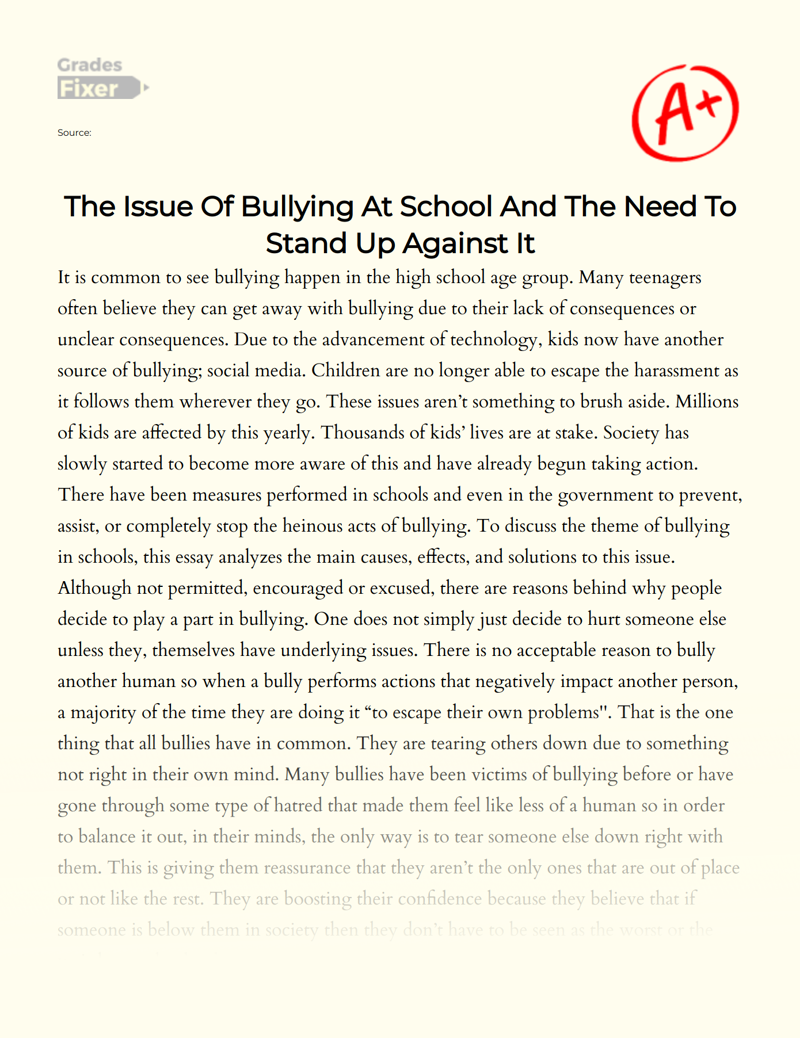
Still can’t find what you need?
Browse our vast selection of original essay samples, each expertly formatted and styled
Related Essays on School Bullying
Kidscape. (n.d.). About Kidscape. Retrieved from https://www.childline.org.uk/info-advice/bullying-abuse-safety/types-bullying/
In all fairness, and in all matters of life, including medicine and health science, the state of the human race is foremost, before any other considerations are made. This is why there is the use of non-human animal testing in [...]
Since video games entered homes in the 1970s, video game popularity has exponentially increased and the different varieties of gaming have become widely diverse ranging from apps on a mobile device to massive scale worlds [...]
Stop Blaming Video Games! According to the American Psychological Association (APA) more than 90% of children in the United States play video games. Among kids between the ages of 12 and 17, the number rises to 97%. More [...]
Yesterday, I was scrolling through my Facebook feed and saw a picture of this week's newspaper dated for October 25, 2016, on the shooting at Union Middle School in Sandy, Utah. The article reported that a fourteen year old [...]
The case below is of a judge (Patricia Doninger) who allowed her court marshals to degrade and sexually abuse a lady who was attending court hearings about her divorce case. After an investigation on the August 12 incident where [...]
Related Topics
By clicking “Send”, you agree to our Terms of service and Privacy statement . We will occasionally send you account related emails.
Where do you want us to send this sample?
By clicking “Continue”, you agree to our terms of service and privacy policy.
Be careful. This essay is not unique
This essay was donated by a student and is likely to have been used and submitted before
Download this Sample
Free samples may contain mistakes and not unique parts
Sorry, we could not paraphrase this essay. Our professional writers can rewrite it and get you a unique paper.
Please check your inbox.
We can write you a custom essay that will follow your exact instructions and meet the deadlines. Let's fix your grades together!
Get Your Personalized Essay in 3 Hours or Less!
We use cookies to personalyze your web-site experience. By continuing we’ll assume you board with our cookie policy .
- Instructions Followed To The Letter
- Deadlines Met At Every Stage
- Unique And Plagiarism Free

The Broad Impact of School Bullying, and What Must Be Done
Major interventions are required to make schools safe learning environments..
Posted May 2, 2021 | Reviewed by Hara Estroff Marano
- How to Handle Bullying
- Take our Anger Management Test
- Find a therapist to support kids or teens
- At least one in five kids is bullied, and a significant percentage are bullies. Both are negatively affected, as are bystanders.
- Bullying is an epidemic that is not showing signs of improvement.
- Evidence-based bullying prevention programs can be effective, but school adoption is inconsistent.
According to the U.S. federal government website StopBullying.gov :
There is no federal law that specifically applies to bullying . In some cases, when bullying is based on race or ethnicity , color, national origin, sex, disability, or religion, bullying overlaps with harassment and schools are legally obligated to address it.
The National Bullying Prevention Center reports data suggesting that one in five children have been bullied. There are many risk factors for being targeted, including being seen as weak, being different from peers including being LGBT or having learning differences or visible disabilities, being depressed or anxious, and having few friends. It's hard to measure how many engage in bullying, but estimates range from one in twenty, to much higher .
The American Association of University Women reports that in grades 7-12, 48 percent of students (56 percent of girls and 40 percent of boys) are sexually harassed. In college, rates of sexual harassment rise to 66 percent. Eleven percent are raped or sexually assaulted.
Silence facilitates traumatization
Only 20 percent of attacked young women report sexual assault . And 89 percent of undergraduate schools report zero sexual harassment. This means that children, adolescents, young adults and their friends are at high risk for being victimized. It means that many kids know what is happening, and don't do anything.
This may be from fear of retaliation and socialization into a trauma-permissive culture, and it may be from lack of proper education and training. Institutional betrayal , when organizations fail to uphold their promises and responsibilities, adds to the problem.
In some states such as New York, laws like “ the Dignity for All Students Act ” (DASA) apply only to public schools. Private, religious, and denominational schools are not included, leaving 20 percent of students in NYC and 10 percent throughout the state unprotected. Research shows that over the last decade, bullying in U.S. high schools has held steady around 20 percent, and 15 percent for cyberbullying.
The impact of bullying
While there is much research on how bullying affects mental health, social function, and academics, the results are scattered across dozens of papers. A recent paper in the Journal of School Violence (Halliday et al., 2021) presents a needed systematic literature review on bullying’s impact in children aged 10-18.
1. Psychological: Being a victim of bullying was associated with increased depression , anxiety , and psychosis . Victims of bullying reported more suicidal thinking and engaged in greater self-harming behaviors. They were more likely to experience social anxiety , body-image issues, and negative conduct. Simultaneous cyberbullying and conventional bullying were associated with more severe depression.
2. Social: Bullying victims reported greater problems in relationships with family, friends and in day-to-day social interactions. They reported they enjoyed time with family and friends less, felt they were being treated unfairly more easily, and liked less where they lived. Victimized children were less popular and likeable, and experienced more social rejection. They tended to be friends with other victims, potentially heightening problems while also providing social support.
3. Academic achievement: Victimized kids on average had lower grades. Over time, they did worse especially in math. They tended to be more proficient readers, perhaps as a result of turning to books for comfort in isolation (something people with a history of being bullied commonly report in therapy ).

4. School attitudes: Bullied children and adolescents were less engaged in education, had poorer attendance, felt less belonging, and felt more negatively about school.
5. What happens with age? Researchers studied adult psychiatric outcomes of bullying, looking at both victims and bullies, reported in the Journal of the American Medical Association (JAMA) Psychiatry (Copeland et al., 2013). After controlling for other childhood hardships, researchers found that young adults experience increased rates of agoraphobia (fear of leaving the house), generalized anxiety, panic disorder, and increased depression risk. Men had higher suicide risk.
The impact of bullying does not stop in early adulthood. Research in the Journals of Gerontology (Hu, 2021) found that people over the age of 60 who were bullied as children had more severe depression and had lower life satisfaction.
6. Bullying and the brain: Work reported in Frontiers in Psychiatry (Muetzel et al., 2019) found that victims of bullying had thickening of the fusiform gyrus, an area of the cerebral cortex involved with facial recognition, and sensing emotions from facial expressions. 1 For those with posttraumatic stress disorder, brain changes may be extensive.
7. Bystanders are affected: Research also shows that bystanders have higher rates of anxiety and depression (Midgett et al., 2019). The problem is magnified for bystanders who are also victims. It is likely that taking appropriate action is protective.
Given that victims of bullying are at risk for posttraumatic stress disorder ( PTSD ; Idsoe et al., 2012), it’s important to understand that many of the reported psychiatric findings may be better explained by PTSD than as a handful of overlapping but separate diagnoses. Trauma often goes unrecognized.
What can be done?
The psychosocial and academic costs of unmitigated bullying are astronomical, to say nothing of the considerable economic cost. Change is needed, but resistance to change, as with racism, gender bias, and other forms of discrimination , is built into how we see things.
Legislation: There is no federal antibullying legislation, and state laws may be weak and inconsistently applied. Given that bullying rates are no longer falling, it’s important for lawmakers and advocates to seek immediate changes.
Bullying prevention: Schools can adopt antibullying programs, though they are not universally effective and sometimes may backfire. Overall, however, research in JAMA Pediatrics (Fraguas et al., 2021) shows that antibullying programs reduce bullying, improve mental health outcomes, and stay effective over time. 2
Trauma-informed education creates an environment in which all participants are aware of the impact of childhood trauma and the need for specific modifications given how trauma is common among children and how it affects development.
According to the National Child Traumatic Stress Network (NCTSN):
"The primary mission of schools is to support students in educational achievement. To reach this goal, children must feel safe, supported, and ready to learn. Children exposed to violence and trauma may not feel safe or ready to learn. Not only are individual children affected by traumatic experiences, but other students, the adults on campus, and the school community can be impacted by interacting or working with a child who has experienced trauma. Thus, as schools maintain their critical focus on education and achievement, they must also acknowledge that mental health and wellness are innately connected to students’ success in the classroom and to a thriving school environment."
Parenting makes a difference. Certain parenting styles may set kids up for emotional abuse in relationships , while others may be protective. A 2019 study reported in Frontiers in Public Health (Plexousakis et al.) found that children with anxious, overprotective mothers were more likely to be victims.
Those with cold or detached mothers were more likely to become bullies. Overprotective fathering was associated with worse PTSD symptoms, likely by getting in the way of socialization. The children of overprotective fathers were also more likely to be aggressive.
Quality parental bonding, however, appeared to help protect children from PTSD symptoms. A healthy home environment is essential both for helping victims of bullying and preventing bullying in at-risk children.
Parents who recognize the need to learn more positive approaches can help buffer again the all-too-common cycle of passing trauma from generation to generation, building resilience and nurturing secure attachment to enjoy better family experiences and equip children to thrive.
State-by-state legislation
Bullying prevention programs (the KiVA program is also notable)
Measuring Bullying Victimization, Perpetration and Bystander Experiences , Centers for Disease Control
Trauma-informed teaching
US Government Stop Bullying
1. Such differences could both result from being bullied (e.g. needing to scan faces for threat) and could also make being bullied more likely (e.g. misreading social cues leading to increased risk of being targeted).
2. Such programs focus on reducing negative messaging in order to keep stakeholders engaged, monitor and respond quickly to bullying, involve students in bullying prevention and detection in positive ways (e.g. being an “upstander” instead of a bystander), monitor more closely for bullying when the risk is higher (e.g. after anti-bullying trainings), respond fairly with the understanding that bullies often have problems of their own and need help, involved parents and teachers in anti-bullying education, and devote specific resources for anti-bullying.
Sarah Halliday, Tess Gregory, Amanda Taylor, Christianna Digenis & Deborah Turnbull (2021): The Impact of Bullying Victimization in Early Adolescence on Subsequent Psychosocial and Academic Outcomes across the Adolescent Period: A Systematic Review, Journal of School Violence, DOI: 10.1080/15388220.2021.1913598
Copeland WE, Wolke D, Angold A, Costello EJ. Adult Psychiatric Outcomes of Bullying and Being Bullied by Peers in Childhood and Adolescence. JAMA Psychiatry. 2013;70(4):419–426. doi:10.1001/jamapsychiatry.2013.504
Bo Hu, PhD, Is Bullying Victimization in Childhood Associated With Mental Health in Old Age, The Journals of Gerontology: Series B, Volume 76, Issue 1, January 2021, Pages 161–172, https://doi.org/10.1093/geronb/gbz115
Muetzel RL, Mulder RH, Lamballais S, Cortes Hidalgo AP, Jansen P, Güroğlu B, Vernooiji MW, Hillegers M, White T, El Marroun H and Tiemeier H (2019) Frequent Bullying Involvement and Brain Morphology in Children. Front. Psychiatry 10:696. doi: 10.3389/fpsyt.2019.00696
Midgett, A., Doumas, D.M. Witnessing Bullying at School: The Association Between Being a Bystander and Anxiety and Depressive Symptoms. School Mental Health 11, 454–463 (2019). https://doi.org/10.1007/s12310-019-09312-6
Idsoe, T., Dyregrov, A. & Idsoe, E.C. Bullying and PTSD Symptoms. J Abnorm Child Psychol 40, 901–911 (2012). https://doi.org/10.1007/s10802-012-9620-0
Fraguas D, Díaz-Caneja CM, Ayora M, Durán-Cutilla M, Abregú-Crespo R, Ezquiaga-Bravo I, Martín-Babarro J, Arango C. Assessment of School Anti-Bullying Interventions: A Meta-analysis of Randomized Clinical Trials. JAMA Pediatr. 2021 Jan 1;175(1):44-55. doi: 10.1001/jamapediatrics.2020.3541. PMID: 33136156; PMCID: PMC7607493.
Plexousakis SS, Kourkoutas E, Giovazolias T, Chatira K and Nikolopoulos D (2019) School Bullying and Post-traumatic Stress Disorder Symptoms: The Role of Parental Bonding. Front. Public Health 7:75. doi: 10.3389/fpubh.2019.00075
Note: An ExperiMentations Blog Post ("Our Blog Post") is not intended to be a substitute for professional advice. We will not be liable for any loss or damage caused by your reliance on information obtained through Our Blog Post. Please seek the advice of professionals, as appropriate, regarding the evaluation of any specific information, opinion, advice, or other content. We are not responsible and will not be held liable for third-party comments on Our Blog Post. Any user comment on Our Blog Post that in our sole discretion restricts or inhibits any other user from using or enjoying Our Blog Post is prohibited and may be reported to Sussex Publishers/Psychology Today. Grant H. Brenner. All rights reserved.

Grant Hilary Brenner, M.D., a psychiatrist and psychoanalyst, helps adults with mood and anxiety conditions, and works on many levels to help unleash their full capacities and live and love well.
- Find a Therapist
- Find a Treatment Center
- Find a Psychiatrist
- Find a Support Group
- Find Online Therapy
- United States
- Brooklyn, NY
- Chicago, IL
- Houston, TX
- Los Angeles, CA
- New York, NY
- Portland, OR
- San Diego, CA
- San Francisco, CA
- Seattle, WA
- Washington, DC
- Asperger's
- Bipolar Disorder
- Chronic Pain
- Eating Disorders
- Passive Aggression
- Personality
- Goal Setting
- Positive Psychology
- Stopping Smoking
- Low Sexual Desire
- Relationships
- Child Development
- Self Tests NEW
- Therapy Center
- Diagnosis Dictionary
- Types of Therapy

Sticking up for yourself is no easy task. But there are concrete skills you can use to hone your assertiveness and advocate for yourself.
- Emotional Intelligence
- Gaslighting
- Affective Forecasting
- Neuroscience
Greater Good Science Center • Magazine • In Action • In Education
What Are the Best Ways to Prevent Bullying in Schools?
All 50 U.S. states require schools to have a bullying prevention policy.
But a policy, alone, is not enough. Despite the requirement, there’s been a slight uptick in all forms of bullying during the last three years. Bullying can look like experienced basketball players systematically intimidating novice players off the court, kids repeatedly stigmatizing immigrant classmates for their cultural differences, or a middle-school girl suddenly being insulted and excluded by her group of friends.
Bullying occurs everywhere, even in the highest-performing schools, and it is hurtful to everyone involved, from the targets of bullying to the witnesses—and even to bullies themselves. October is National Bullying Prevention Month, so it’s a good time to ask ourselves: What are the best practices for preventing bullying in schools? That’s a question I explored with my colleague Marc Brackett from the Yale Center for Emotional Intelligence, in a recent paper, Rethinking School-Based Bullying Prevention Through the Lens of Social and Emotional Learning , that reviewed dozens of studies of real-world bullying prevention efforts.

As we discovered, not all approaches to bullying prevention are equally effective. Most bullying prevention programs focus on raising awareness of the problem and administering consequences. But programs that rely on punishment and zero tolerance have not been shown to be effective in the U.S.; and they often disproportionately target students of color. Programs like peer mediation that place responsibility on the children to work out conflicts can increase bullying. (Adult victims of abuse are never asked to “work it out” with their tormentor, and children have an additional legal right to protections due to their developmental status.) Bystander intervention, even among adults, only works for some people—extroverts, empaths, and people with higher social status and moral engagement. Many approaches that educators adopt have not been evaluated through research; instead, educators tend to select programs based on what their colleagues use.
We found two research-tested approaches that show the most promise for reducing bullying (along with other forms of aggression and conflict). They are a positive school climate, and social and emotional learning.
Building a positive school climate
School climate can be difficult to define, though possible to measure . It is the “felt sense” of being in a school, which can arise from a greeting, the way a problem is resolved, or how people work together; it is a school’s “heart and soul,” its “quality and character.” Schools with a positive climate foster healthy development, while a negative school climate is associated with higher rates of student bullying, aggression, victimization, and feeling unsafe.

GGSC Online Courses for Educators
A suite of practical, self-paced courses to help build kinder, happier schools
The elements of a positive climate may vary, but may often include norms about feelings and relationships, power and how it is expressed, and media consumption. Social norm engineering is a conscious process that builds a positive culture among student peers and school adults that becomes self-reinforcing. Like a healthy immune system, a positive school climate promotes optimal health and reduces the chances of dysfunction or disease.
Leadership is key to a positive climate. Is bullying minimized as a “normal rite of childhood,” or is it recognized as the harmful peer abuse that it is? Do leaders understand that uninterrupted, severe bullying can confer lifelong negative consequences on targets of bullies, bullies, and witnesses? Are school leaders committed to promoting all children’s positive psychological health, or do they over-rely on punishing misbehavior? Can they discern between typical developmental processes that need guidance versus bullying that needs assertive intervention? Are educators empathic to their students, and do they value children’s feelings?
Next, are teachers prepared to deal with bullying? Students consistently report that teachers miss most incidents of bullying and fail to help students when asked. A majority of teachers report that they feel unprepared to deal with classroom bullying. Some teachers bully students themselves , or show a lack of empathy toward children who are bullied. Teachers report that they receive little guidance in “classroom management,” and sometimes default to the disciplinary strategies they learned in their own families growing up.
However, reforming school climate should involve all stakeholders—students and parents, as well as the administrators and teachers—so a school’s specific issues can be addressed, and the flavor of local cultures retained. School climate assessments can be completed periodically to track the impact of improvements.
Advancing social and emotional learning
Social and emotional learning (SEL) is well known, and involves teaching skills of self-awareness, self-management, social awareness, responsible decision making, and relationships management. (Full disclosure: Brackett and I are affiliated with the SEL program RULER .)
Evidence-based SEL approaches have been shown to deliver cost-effective, solid results. Numerous meta-analyses , research reviews , and individual studies of hundreds of thousands of K-12 students show that SEL improves emotional well-being, self-regulation, classroom relationships, and kind and helpful behavior among students. It reduces a range of problems like anxiety, emotional distress, and depression; reduces disruptive behaviors like conflicts, aggression, bullying, anger, and hostile attribution bias; and it improves academic achievement, creativity, and leadership.
A 2012 study of 36 first-grade teachers showed that when teachers were more emotionally supportive of students, children were less aggressive and had greater behavioral self-control, compared to the use of behavior management, which did not improve student self-control. One 2018 meta-analysis showed that developing emotional competence was protective against becoming a victim of bullying; social competence and academic performance were protective against becoming a bully; and positive peer interactions were protective against becoming a bully-victim (one who has been bullied and bullies others). A series of longitudinal studies showed positive effects into midlife (e.g., fewer divorces, less unemployment) and even cross-generational effects of early SEL. Compared to a matched control group, the children of the adults who participated in the Perry Preschool Project had less criminal involvement and higher educational and employment achievement. A cost-benefit analysis of six SEL programs found them to be good investments, with $11 saved for every $1 spent.
Teachers also benefit from SEL. Those with emotional and social skills training have higher job satisfaction and less burnout, show more positive emotions toward their students, manage their classrooms better, and use more strategies that cultivate creativity, choice, and autonomy in their students. Teachers report that they want more SEL support to cultivate their own emotional and social skills, and to better understand their students’ feelings. But few teacher training programs focus on growing the teachers’ emotion regulation skills.
Bullying at different age levels
SEL approaches should be developmentally wise , since what is salient and possible for children changes at different ages.
For example, preschoolers are expelled from school at the highest rates of all, but the neurological hardware for their self-control is only just developing. Only then are the connections between the emotion circuitry and the more thinking regions of the prefrontal cortex beginning to be myelinated (insulated for faster connectivity), something that will take until the mid 20s to complete. An SEL program like PATHS or RULER that teaches young children language for feelings, and strategies for thinking before acting, can develop better self-regulation.
Sometimes, adults confuse normal developmental processes with bullying. For example, children begin to reorganize their friendships midway through elementary school, something that can naturally create hurt feelings and interpersonal conflict. It should not be misconstrued as bullying, though, which involves intentional, repeated aggression within an imbalance of power. Normal development also includes experimenting with power, and these normal dynamics should be guided safely toward developing a healthy sense of agency, rather than a hurtful exertion of power over someone else.
Finally, the onset of puberty marks the beginning of heightened sensitivity to social relationships, an especially important time to cultivate skills for kinder, gentler relationships. Unfortunately, this is the period when bullying spikes the highest. And while some strategies work well for younger children (for example, advising them to “tell a trusted adult”), this option may fail with teens, and the breakpoint seems to be around the eighth grade. Older teens require approaches that are less didactic and leverage their need for autonomy, while affirming their values and search for meaning. Physiologically, the brain changes during puberty confer a second chance for recalibrating their stress regulation system. That opportunity should be constructively seized.
Approaches should also take into account individual differences between children. Even SEL programs can stumble here, over-relying on just one or two emotion regulation strategies, like breathing or mindfulness. But children vary in their temperaments, sensitivities, strengths, and vulnerabilities. The best SEL approaches guide students toward discovering strategies that work best for them—strategies that are emotion- and context-specific, personalized, and culturally responsive. This approach requires unconventional flexibility on the part of the educators.
And, finally, approaches work best if they are not standalone pedagogies or from kits that end up in the classroom closet at the end of the year. In order to be effective, skills should become fully embedded across the curricula and the entire day, in all settings, and implemented by all adults—in other words, infiltrating the ecosystem. Only approaches used and taught as intended are successful.
Schools can’t do this alone
Families matter, too. Bullying in schools sometimes arises from harsh parenting practices or sibling bullying at home.
Even parents’ workplaces matter. Adults experience bullying in their workplaces at about the same rate as children in schools, and it’s even found among teachers and in senior living communities . In other words, bullying is not just a childhood problem; it is a pervasive human problem. And children are not buffered from the wider social world—bullying of children who belong to groups targeted in the national political discourse has spiked on playgrounds nationwide.
Ultimately, we need a substantial shift in our mindsets about the importance of children and their feelings. Children are more likely to thrive when we nurture their humanity, and offer them language and strategies and values to help them identify, express, and, thus, regulate their feelings. When parents, teachers, and administrators gain new awareness into the complex roots of bullying and adopt new strategies for addressing it, schools can lead the way. The kids are counting on us.

Now Accepting Applications!
Join Greater Good Educators to build kinder, happier schools where everyone belongs.
About the Author

Diana Divecha
Diana Divecha, Ph.D. , is a developmental psychologist, an assistant clinical professor at the Yale Child Study Center and Yale Center for Emotional Intelligence, and on the advisory board of the Greater Good Science Center. Her blog is developmentalscience.com .
You May Also Enjoy
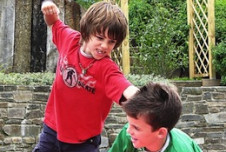
How Bullied Children Grow into Wounded Adults
Eight keys to end bullying.
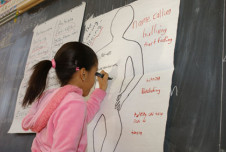
The Bully Problem
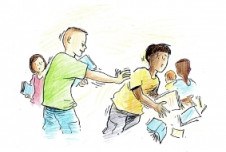
Playground Heroes

Could Gay-Straight Alliances Reduce Bullying?
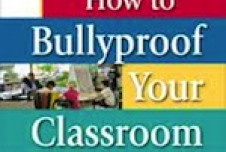
How to Bullyproof Your Kid
What you need to know about school violence and bullying
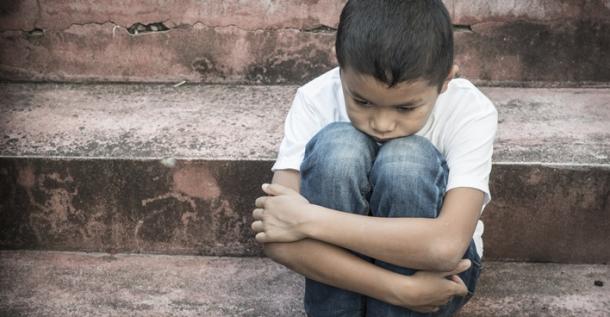
Bullying in schools deprives millions of children and young people of their fundamental right to education. A recent UNESCO report revealed that more than 30% of the world's students have been victims of bullying, with devastating consequences on academic achievement, school dropout, and physical and mental health.
The world is marking the first International Day against Violence and Bullying at School Including Cyberbullying , on 5 November. Here is what you need to know about school violence and bullying.
What is school violence?
School violence refers to all forms of violence that takes place in and around schools and is experienced by students and perpetrated by other students, teachers and other school staff. This includes bullying and cyberbullying. Bullying is one of the most pervasive forms of school violence, affecting 1 in 3 young people.
What forms may school violence take?
Based on existing international surveys that collect data on violence in schools, UNESCO recognizes the following forms of school violence:
- Physical violence, which is any form of physical aggression with intention to hurt perpetrated by peers, teachers or school staff.
- Psychological violence as verbal and emotional abuse, which includes any forms of isolating, rejecting, ignoring, insults, spreading rumors, making up lies, name-calling, ridicule, humiliation and threats, and psychological punishment.
- Sexual violence, which includes intimidation of a sexual nature, sexual harassment, unwanted touching, sexual coercion and rape, and it is perpetrated by a teacher, school staff or a schoolmate or classmate.
- Physical bullying, including hitting, kicking and the destruction of property;
- Psychological bullying, such as teasing, insulting and threatening; or relational, through the spreading of rumours and exclusion from a group; and
- Sexual bullying, such as making fun of a victim with sexual jokes, comments or gestures, which may be defined as sexual ‘harassment’ in some countries.
- Cyberbullying is a form of psychological or sexual bullying that takes place online. Examples of cyberbullying include posting or sending messages, pictures or videos, aimed at harassing, threatening or targeting another person via a variety of media and social media platforms. Cyberbullying may also include spreading rumours, posting false information, hurtful messages, embarrassing comments or photos, or excluding someone from online networks or other communications.
Who perpetrates school violence?
School violence is perpetrated by students, teachers and other school staff. However, available evidence shows that violence perpetrated by peers is the most common.
What are the main reasons why children are bullied?
All children can be bullied, yet evidence shows that children who are perceived to be “different” in any way are more at risk. Key factors include physical appearance, ethnic, linguistic or cultural background, gender, including not conforming to gender norms and stereotypes; social status and disability.
What are the consequences of school violence?
Educational consequences: Being bullied undermines the sense of belonging at school and affects continued engagement in education. Children who are frequently bullied are more likely to feel like an outsider at school, and more likely to want to leave school after finishing secondary education. Children who are bullied have lower academic achievements than those who are not frequently bullied.
Health consequences: Children’s mental health and well-being can be adversely impacted by bullying. Bullying is associated with higher rates of feeling lonely and suicidal, higher rates of smoking, alcohol and cannabis use and lower rates of self-reported life satisfaction and health. School violence can also cause physical injuries and harm.
What are the linkages between school violence and bullying, school-related gender-based violence and violence based on sexual orientation and gender identity or expression?
School violence may be perpetrated as a result of gender norms and stereotypes and enforced by unequal power dynamics and is therefore referred to as school-related gender-based violence. It includes, in particular, a specific type of gender-based violence that is linked to the actual or perceived sexual orientation and gender identity or expression of victims, including homophobic and transphobic bullying. School-related gender-based violence is a significant part of school violence that requires specific efforts to address.
Does school-related gender-based violence refer to sexual violence against girls only?
No. School-related gender-based violence refers to all forms of school violence that is based on or driven by gender norms and stereotypes, which also includes violence against and between boys.
Is school violence always gender-based?
There are many factors that drive school violence. Gender is one of the significant drivers of violence but not all school violence is based on gender. Moreover, international surveys do not systematically collect data on the gendered nature of school violence, nor on violence based on sexual orientation and gender identity or expression.
Based on the analysis of global data, there are no major differences in the prevalence of bullying for boys and girls. However, there are some differences between boys and girls in terms of the types of bullying they experience. Boys are much more exposed to physical bullying, and to physical violence in general, than girls. Girls are slightly more exposed to psychological bullying, particularly through cyberbullying. According to the same data, sexual bullying the same proportion of boys and girls. Data coming from different countries, however, shows that girls are increasingly exposed to sexual bullying online.
How does UNESCO help prevent and address school violence and bullying?
The best available evidence shows that responses to school violence and bullying that are effective should be comprehensive and include a combination of policies and interventions. Often this comprehensive response to school violence and bullying is referred to as a whole-school approach. Based on an extensive review of existing conceptual frameworks that describe that whole-school approach, UNESCO has identified nine key components of a response that goes beyond schools and could be better described as a whole-education system or whole-education approach. These components are the following:
- Strong political leadership and robust legal and policy framework to address school violence and bullying;
- Training and support for teachers on school violence and bullying prevention and positive classroom management
- Curriculum, learning & teaching to promote, a caring (i.e. anti- school violence and bullying) school climate and students’ social and emotional skills
- A safe psychological and physical school and classroom environment
- Reporting mechanisms for students affected by school violence and bullying, together with support and referral services
- Involvement of all stakeholders in the school community including parents
- Student empowerment and participation
- Collaboration and partnerships between the education sector and a wide range of partners (other government sectors, NGOs, academia)
- Evidence: monitoring of school violence and bullying and evaluation of responses
More on UNESCO’s work to prevent and address school violence and bullying
Read UNESCO's publication Behind the numbers: Ending school violence and bullying
Photo: Eakachai Leesin/Shutterstock.com

Other recent articles

Article Terms of Reference: Translation of radio programmes ‘Let’s Talk Early and Unintended Pregnancy!’ in Eswatini 23 July 2024
Article Call for expressions of Interest: Facilitating the development of interpretive tools/materials at the Great Zimbabwe World Heritage site 23 July 2024
Article Terms of Reference for the development of an electronic health database for campus health facilities in Zimbabwe 23 July 2024
Articles on Bullying in schools
Displaying 1 - 20 of 21 articles.

Emotional problems in young people were rising rapidly even before the pandemic
Rebecca E Anthony , Cardiff University

Disruptive kindergartners are likely to be bullied later in elementary school
Paul L. Morgan , Penn State
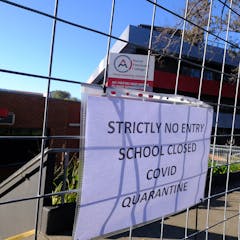
School students who had COVID-19 report stigma and bullying. How can we stop it?
Brian Moore , Charles Sturt University and Stuart Woodcock , Griffith University
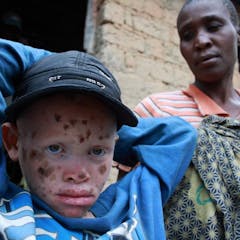
Taunts and bullying drive children with albinism from Tanzanian schools
Simon Ngalomba , University of Dar es Salaam

Bullying linked to gender and sexuality often goes unchecked in schools
Victoria Rawlings , University of Sydney

Is your child less likely to be bullied in a private school?
Karyn Healy , The University of Queensland

Cutting down the tall poppies: female athletes bullied in Aussie schools
Maureen O'Neill , University of the Sunshine Coast and Angie Calder , University of the Sunshine Coast

How to reduce prejudice among groups of children at school
Luke McGuire , Goldsmiths, University of London
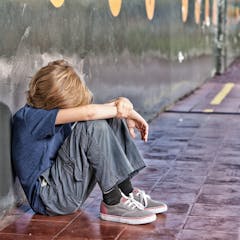
It shouldn’t take legal action for schools to act on bullying
Sally Varnham , University of Technology Sydney

Nearly a third of early adulthood depression linked to bullying in teenage years
Lucy Bowes , University of Oxford

What to do when your child is the bully, rather than the victim
Natalie Swayn, University of New England ; Christopher Boyle , University of New England , and Dr Joanna Anderson , University of New England

What should parents do if their child is bullied at school?

Telling kids homophobia is wrong won’t stop bullying in schools
Mary Lou Rasmussen , Monash University ; Fida Sanjakdar , Monash University ; Kathleen Quinlivan , University of Canterbury , and Louisa Allen , University of Auckland, Waipapa Taumata Rau

Everyone has a part to play in managing classroom bullying
Barbara Spears , University of South Australia
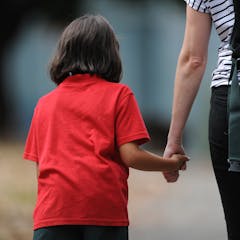
How parents can prevent and deal with bullying
Sheryl Hemphill , Australian Catholic University

How to handle bullies
Phillip Slee , Flinders University
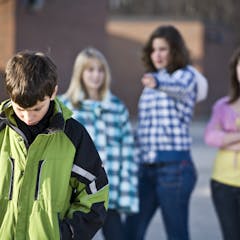
The difference between ‘bullying’ and ‘everyday life’
Marilyn Campbell , Queensland University of Technology

What works best to help stop bullying in schools?
Peter K Smith , Goldsmiths, University of London and Fran Thompson , Goldsmiths, University of London

It’s the permanence of online abuse that makes cyberbullying so damaging for children
Chris Kyriacou , University of York
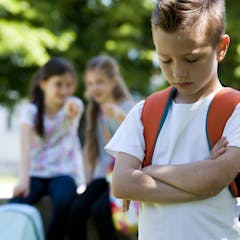
Who are more likely to be bullies – poor kids or rich kids?
Neil Tippett , University of Warwick and Dieter Wolke , University of Warwick
Related Topics
- Author Q&A
- Bullying prevention
- Child behaviour
- Cyberbullying
- Mental health
- Non-government schools
- School bullying
- Special needs
Top contributors
Researcher, The University of Queensland
Professor, School of Sociology, Australian National University
Professor of Psychology, University of Warwick
Leverhulme Early Career Research Fellow, University of Oxford
Professor in Educational Psychology, University of York
Research Fellow, Manchester Institute of Education, University of Manchester
PhD student, University of Warwick
Adjunct Professor of Education and Social Development, University of South Australia
Professor, School of Early Childhood & Inclusive Education, Queensland University of Technology
Professor, Human Development, School of Education, Flinders University
Emeritus Professor, Unit for School and Family Studies, Department of Psychology, Goldsmiths, University of London
Researcher, Unit for School and Family Studies, Department of Psychology, Goldsmiths, University of London
Associated professor at the Department of Education at Federal University of São Carlos, Brazil and academic visiting scholar, department of education, University of York
Professor of Psychology, Australian Catholic University
Senior Lecturer in Inclusive Education, University of New England
- X (Twitter)
- Unfollow topic Follow topic
- Bullying Problem in School Words: 651
- The Problem of Bullying in School Words: 2206
- Prevention of Bullying in Schools Words: 4261
- Bullying in Schools: Essay Example Words: 904
- Reducing Bullying in Schools by Involving Stakeholders Words: 2607
- Bullying in School: The Negative Effects Words: 642
- Bullying in Schools and Intervention Methods Words: 827
- Bullying in Schools: Addressing and Preventing Words: 2267
- School Bullying and Problems in Adult Life Words: 1480
- Bullying and Laws in American Schools Words: 1116
- The Issue of High School Bullying Words: 1143
- The Consequences of High School Bullying Words: 470
School Bullying: Causes and Effects
Bullying has become one of the most urgent problems in modern society. It comes from different sources and affects victims’ psychological state and quality of life. In this essay, we analyze the causes of bullying in school, its effects on victims, and mitigation measures that should be taken.
Cause and Effect of Bullying: Essay Introduction
Cause of bullying in school, bullying causes and effects: mitigation measures, works cited.
Bullying is one of the main challenges children face at school. It is a global problem that is currently affecting many youth. The rate at which bullying cases are reported causes many worries to parents. The issue is severe to the extent that many children have learned to live with it, and some have created the notion that bullying is part of their life in the early years of their development. Several cases, especially in the United States and Japan, have been reported about children’s humiliation, mistreatment, physical attacks, and even rape cases of young female learners.
The effects of bullying on a child can be very traumatizing if not carefully addressed. These effects sometimes are long-lasting and can provoke the victim to take dangerous measures to forget the incidents. According to Rigby (64), bullying experiences can cost the lives of the victims if not prevented in time. In New York, it is reported that a young immigrant killed herself due to excessive bullying. This researcher argues that it is high time for the issue of bullying in schools to be addressed. The notion that bullying is a rite of passage should be eliminated. This research paper aims to explore the causes, effects, and possible solutions to bullying in schools.
According to Olweus (34), many reasons lead to bullying in schools. One of the main causes is the cultural factor. This includes race and ethnicity. A child may be a bully or a victim if he or she comes from a majority or minority race, respectively. Another cause of bullying in schools is the nature of life a child is exposed to. In many families in developed countries, children can comfortably watch TV even in their bedrooms. Instead of studying, such children spend their time playing computer games. Their games make them bullies because they see others practice the same.
According to Tattumand Lane (27), high expectations of parents of their children contribute to bullying. The reason is that a child will spend much time studying to perform well and meet the parents’ expectations. Failure to achieve the target may develop stress in a child, and they will express anger through shouting or bullying fellow learners. Another cause of bullying in schools emanates from the family’s social status. A child from a humble background will always have some pressurizing needs that are not met. This child will always want to express this frustration to fellow learners, especially those from stable families, by bullying them.
The effects of bullying, as mentioned above, can be very traumatizing. Victims of bullying may opt to drop out of school because of the trauma they experience. Others may develop irresponsible behavior that involves missing classes on most occasions. School irregularities among the learners result in poor performance. Bullying leads to stress among the victims. This, in turn, results in poor communication with these children. McGrath (44) argues that, in some cases, excessive bullying can lead to victims committing suicide to escape from painful experiences and memories.
Some of the effects are short-term, but if not well addressed, they can result in serious complications. The victims may have bed-wetting problems, unexplained worries, and digestive problems because of the fear instilled in them. Some victims with the intention of hitting back may develop very destructive behavior. Other victims may end up engaging in drug abuse to make them forget their painful experiences. Bullying affects the normal development of victims and makes them have low self-esteem (Dupper 62).
Mitigating bullying in schools is not a one-person battle. Since it is a global issue, it calls for a collaborative and participatory approach to addressing the problem. Teachers, parents, and policymakers have a significant role in curbing this bad behavior in schools. Teachers spend much of their time with the learners and, therefore, can easily control their behavior while in school. They should be tough and keen to identify the bullies and expel or suspend them from school to avoid spreading such behaviors among other learners. School administrators should seriously punish the physically strong learners who take advantage of the weak ones by mistreating them. The administration should not tolerate any sign of bullying within the school (Tattum&Lane 53).
Parents should also be strict with their children and avoid anything that may turn them into bullies. Watching TV and playing computer games must be regulated at home. The child should be seriously punished if he or she shows some bullying behavior while at home. The government also has an essential role in curbing this vice. Policymakers must enact policies that address bullying in schools. These policies should be implemented and strictly adhered to, and whoever violates them should face the law irrespective of age. All the stakeholders, including the humanitarian non-governmental organizations, must join hands to curb this vice in society. Through this collaborative approach, success will be achieved.
Dupper, David. School Bullying: New Perspectives on a Growing Problem . New York: Oxford University Press, 2013. Print.
McGrath, Mary. School Bullying: Tools for Avoiding Harm and Liability . Thousand Oaks, Calif: Corwin Press, 2007. Print.
Olweus, Dan. Bullying at School: What We Know and What We Can Do . Oxford, UK: Blackwell, 1993. Print.
Rigby, Ken. Bullying in Schools and What to Do About It . Melbourne, Vic: ACER, 2007. Print.
Tattum, Delwyn, and David Lane. Bullying in Schools . Stoke-on-Trent: Trentham, 1988. Print.
Cite this paper
- Chicago (N-B)
- Chicago (A-D)
StudyCorgi. (2020, November 7). School Bullying: Causes and Effects. https://studycorgi.com/school-bullying-causes-and-effects/
"School Bullying: Causes and Effects." StudyCorgi , 7 Nov. 2020, studycorgi.com/school-bullying-causes-and-effects/.
StudyCorgi . (2020) 'School Bullying: Causes and Effects'. 7 November.
1. StudyCorgi . "School Bullying: Causes and Effects." November 7, 2020. https://studycorgi.com/school-bullying-causes-and-effects/.
Bibliography
StudyCorgi . "School Bullying: Causes and Effects." November 7, 2020. https://studycorgi.com/school-bullying-causes-and-effects/.
StudyCorgi . 2020. "School Bullying: Causes and Effects." November 7, 2020. https://studycorgi.com/school-bullying-causes-and-effects/.
This paper, “School Bullying: Causes and Effects”, was written and voluntary submitted to our free essay database by a straight-A student. Please ensure you properly reference the paper if you're using it to write your assignment.
Before publication, the StudyCorgi editorial team proofread and checked the paper to make sure it meets the highest standards in terms of grammar, punctuation, style, fact accuracy, copyright issues, and inclusive language. Last updated: November 8, 2023 .
If you are the author of this paper and no longer wish to have it published on StudyCorgi, request the removal . Please use the “ Donate your paper ” form to submit an essay.
Numbers, Facts and Trends Shaping Your World
Read our research on:
Full Topic List
Regions & Countries
- Publications
- Our Methods
- Short Reads
- Tools & Resources
Read Our Research On:
9 facts about bullying in the U.S.
Many U.S. children have experienced bullying, whether online or in person. This has prompted discussions about schools’ responsibility to curb student harassment , and some parents have turned to home-schooling or other measures to prevent bullying .
Here is a snapshot of what we know about U.S. kids’ experiences with bullying, taken from Pew Research Center surveys and federal data sources.
Pew Research Center conducted this analysis to understand U.S. children’s experiences with bullying, both online and in person. Findings are based on surveys conducted by the Center, as well as data from the Bureau of Justice Statistics, the National Center for Education Statistics and the Centers for Disease Control and Prevention. Additional information about each survey and its methodology can be found in the links in the text of this analysis.
Bullying is among parents’ top concerns for their children, according to a fall 2022 Center survey of parents with children under 18 . About a third (35%) of U.S. parents with children younger than 18 say they are extremely or very worried that their children might be bullied at some point. Another 39% are somewhat worried about this.
Of the eight concerns asked about in the survey, only one ranked higher for parents than bullying: Four-in-ten parents are extremely or very worried about their children struggling with anxiety or depression.
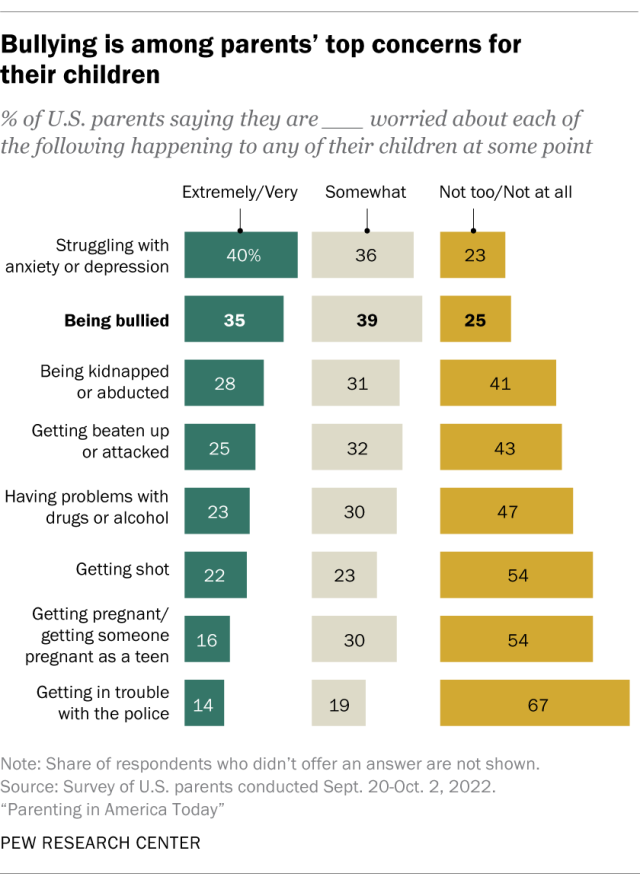
About half of U.S. teens (53%) say online harassment and online bullying are a major problem for people their age, according to a spring 2022 Center survey of teens ages 13 to 17 . Another 40% say it is a minor problem, and just 6% say it is not a problem.
Black and Hispanic teens, those from lower-income households and teen girls are more likely than those in other groups to view online harassment as a major problem.
Nearly half of U.S. teens have ever been cyberbullied, according the 2022 Center survey of teens . The survey asked teens whether they had ever experienced six types of cyberbullying. Overall, 46% say they have ever encountered at least one of these behaviors, while 28% have experienced multiple types.
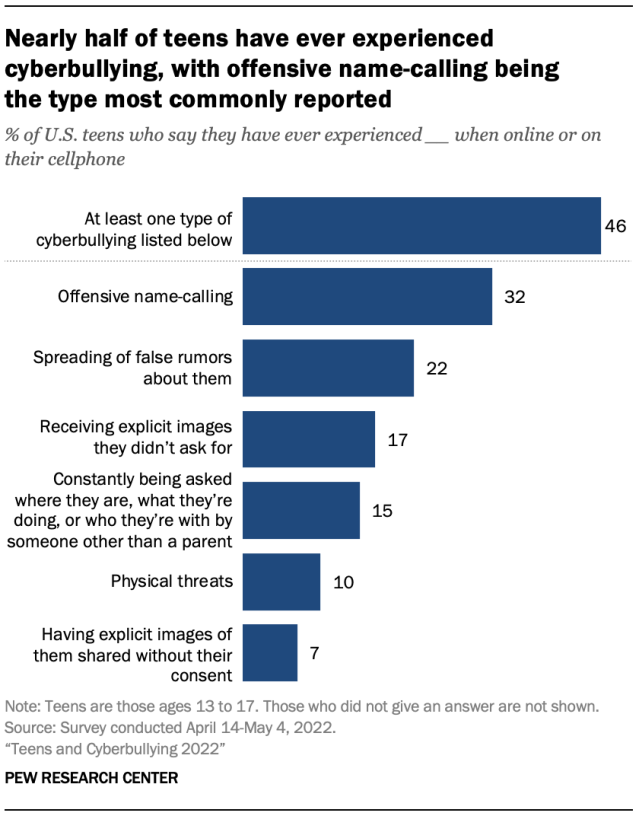
The most common type of online bullying for teens in this age group is being called an offensive name (32% have experienced this). Roughly one-in-five teens have had false rumors spread about them online (22%) or were sent explicit images they didn’t ask for (17%).
Teens also report they have experienced someone other than a parent constantly asking them where they are, what they’re doing or who they’re with (15%); being physically threatened (10%); or having explicit images of them shared without their consent (7%).
Older teen girls are especially likely to have experienced bullying online, the spring 2022 survey of teens shows. Some 54% of girls ages 15 to 17 have experienced at least one cyberbullying behavior asked about in the survey, compared with 44% of boys in the same age group and 41% of younger teens. In particular, older teen girls are more likely than the other groups to say they have been the target of false rumors and constant monitoring by someone other than a parent.
They are also more likely to think they have been harassed online because of their physical appearance: 21% of girls ages 15 to 17 say this, compared with about one-in-ten younger teen girls and teen boys.
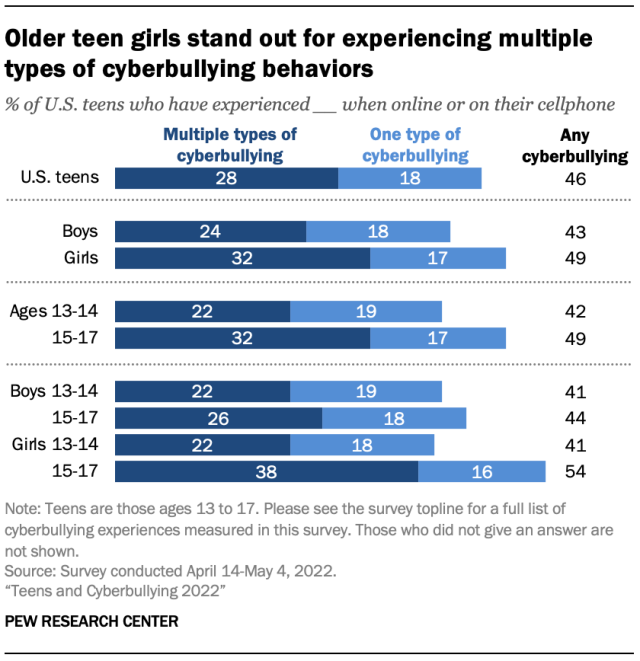
White, Black and Hispanic teens have all encountered online bullying at some point, but some of their experiences differ, the spring 2022 teens survey found. For instance, 21% of Black teens say they’ve been targeted online because of their race or ethnicity, compared with 11% of Hispanic teens and 4% of White teens.
Hispanic teens are the most likely to say they’ve been constantly asked where they are, what they’re doing or who they’re with by someone other than a parent. And White teens are more likely than Black teens to say they’ve been targeted by false rumors.
The sample size for Asian American teens was not large enough to analyze separately.
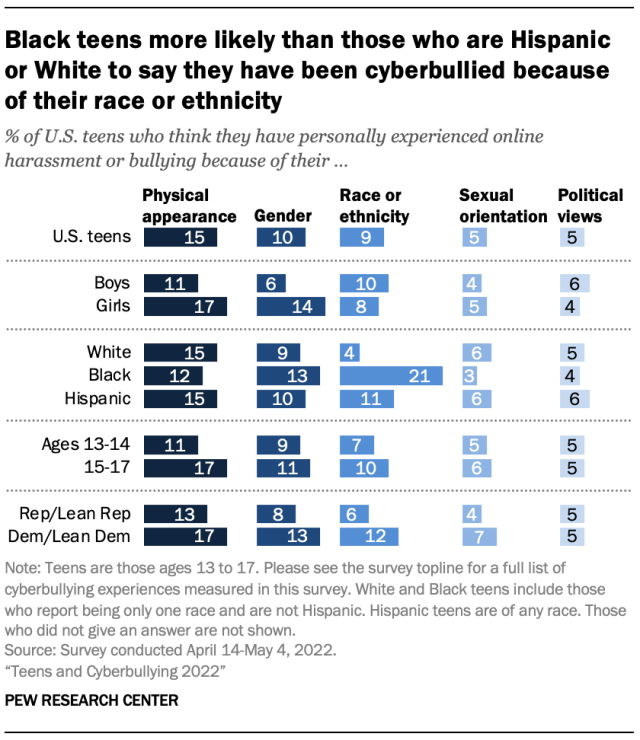
During the 2019-2020 school year, around two-in-ten U.S. middle and high school students said they were bullied at school . That year, 22% of students ages 12 to 18 said this, with the largest shares saying the bullying occurred for one day only (32%) or for between three and 10 days (29%), according to the most recent available data from the Bureau of Justice Statistics (BJS) and the National Center for Education Statistics (NCES).
Certain groups of students were more likely to experience bullying at school. They include girls, middle schoolers (those in sixth, seventh or eighth grade), and students in rural areas.
The most common types of at-school bullying for all students ages 12 to 18 were being made the subject of rumors (15%) and being made fun of, called names or insulted (14%).
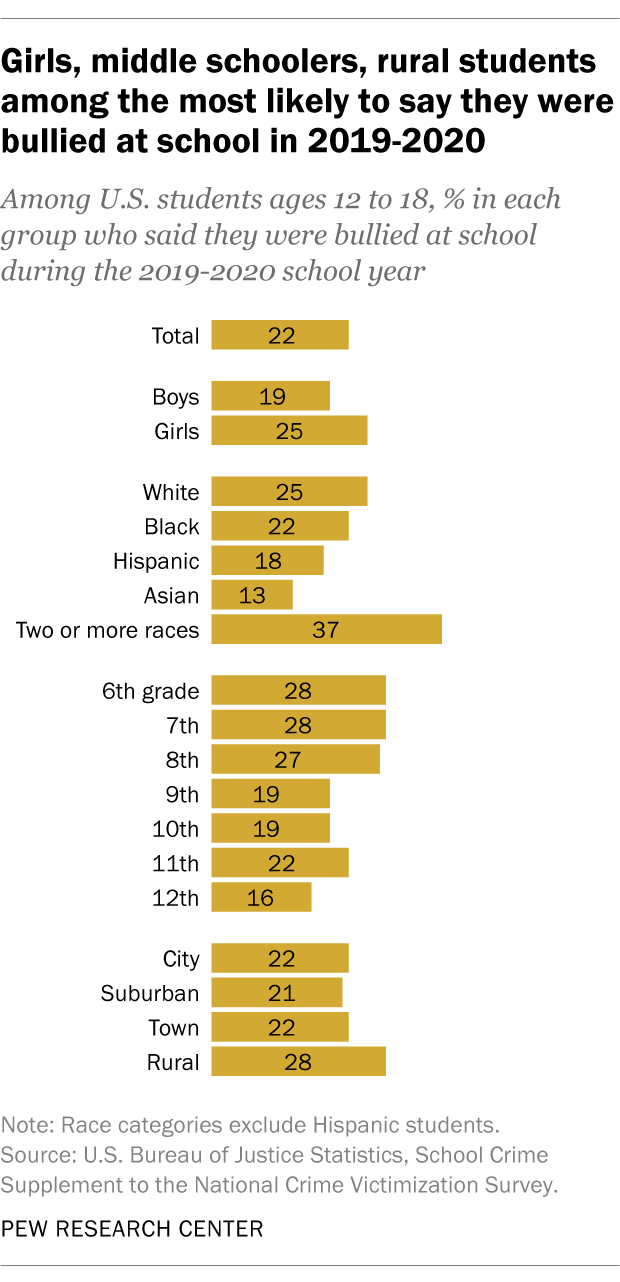
The classroom was the most common location of bullying that occurred at school in 2019-2020, the BJS and NCES data shows. This was the case for 47% of students ages 12 to 18 who said they were bullied during that school year. Other frequently reported locations included hallways or stairwells (39%), the cafeteria (26%) and outside on school grounds (20%).
Fewer than half (46%) of middle and high schoolers who were bullied at school in 2019-2020 said they notified a teacher or another adult about it, according to the BJS and NCES data. Younger students were more likely to tell an adult at school. Around half or more of sixth, seventh and eighth graders said they did so, compared with 28% of 12th graders.
Students who reported more frequent bullying were also more likely to notify an adult at school. For instance, 60% of those who experienced bullying on more than 10 days during the school year told an adult, compared with 35% of those who experienced it on one day.
In 2021, high schoolers who are gay, lesbian or bisexual were about twice as likely as their heterosexual counterparts to say they’d been bullied, both at school and online, according to the Centers for Disease Control and Prevention . In the 12 months before the survey, 22% of high school students who identify as gay, lesbian or bisexual – and 21% of those who identify as questioning or some other way – said they were bullied on school property. That compares with 10% of heterosexual students. The data does not include findings for transgender students.
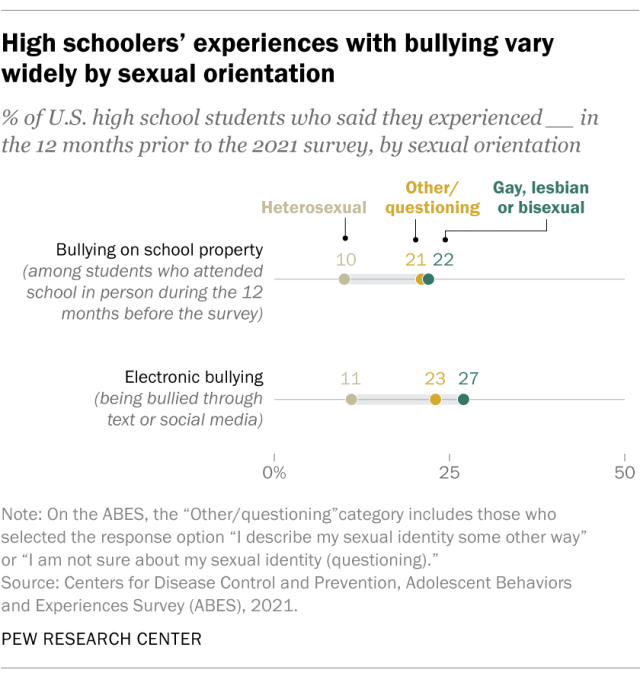
The trend is similar when it comes to electronic bullying through text or social media: 27% of high school students who identify as lesbian, gay or bisexual say they experienced this in the 12 months before the survey, as did 23% of those who identify as questioning or some other way. That compares with 11% of those who identify as heterosexual.
- Online Harassment & Bullying

Katherine Schaeffer is a research analyst at Pew Research Center .
72% of U.S. high school teachers say cellphone distraction is a major problem in the classroom
U.s. public, private and charter schools in 5 charts, a quarter of u.s. teachers say ai tools do more harm than good in k-12 education, most americans think u.s. k-12 stem education isn’t above average, but test results paint a mixed picture, about 1 in 4 u.s. teachers say their school went into a gun-related lockdown in the last school year, most popular.
1615 L St. NW, Suite 800 Washington, DC 20036 USA (+1) 202-419-4300 | Main (+1) 202-857-8562 | Fax (+1) 202-419-4372 | Media Inquiries
Research Topics
- Email Newsletters
ABOUT PEW RESEARCH CENTER Pew Research Center is a nonpartisan fact tank that informs the public about the issues, attitudes and trends shaping the world. It conducts public opinion polling, demographic research, media content analysis and other empirical social science research. Pew Research Center does not take policy positions. It is a subsidiary of The Pew Charitable Trusts .
© 2024 Pew Research Center
The Issue of Bullying in the Schools Essay
- To find inspiration for your paper and overcome writer’s block
- As a source of information (ensure proper referencing)
- As a template for you assignment
Personal experience
Forms, effects and recommendations of bullying, works cited.
This paper attempts to look at the issue of bullying in the schools. A personal story about how I was bullied when I was young is included. The paper looks at this issue by considering aspects like causes and forms of bullying as well as examples of bullying cases.
Since the number of bullying cases has been on the increase in schools, recommendations will be offered on the best thing to do when bullying cases are reported. Main ideas on the topic will be presented so that the issue can be presented in a comprehensive way (Smith, Pepler, and Rigby 56-60).
I grew up in south Bronx until I was thirteen years old when we moved to an Irish neighborhood. My brother and sister are half Irish and half Puerto Rican, unlike me; my whole family has a very fair skin. The first time I landed on this neighborhood, I was very delighted since unlike our previous home I could play outside the house.
I still recall what befell me the first time I went out to play; all the children in the neighborhood were white and the girls started harassing me by telling me that if I was hoping to live there I had to be white, they even spread baby powder on my face. We later become friends although some of their parents resented me because I was Spanish. The situation did not get any better since some children nicknamed me Goya bean: this made to hate Goya beans
When summer ended, I joined school and it so happened that I was the only Spanish girl in the whole school. Things did not go well here either since I picked fights frequently because other children teased me. At some point, it became a routine that I had to be involved in a fight everyday. The principle took the initiative of calling my mother to discuss the matter. When my mother came, she was told that I was a problematic child since I frequently fought with other children.
The board of directors claimed that with my stubborn nature I deserved to be taken to a special school where other problematic children studied. Since then, I was regarded as a problematic child. My mother was forced to transfer me to another school since I was expelled from my former school. I developed low self-esteem and I started taking drugs, soon afterwards I dropped out of school at sixth grade.
This victimization made me to start thinking of ways that I could change my way of life to show that I was still strong hence prove to my aggressors wrong. The events acted as a motivating factor for me to make a difference. Each time I feel like giving up my efforts of trying to be what I want to be, I look back and remember all the challenges that I have overcome in my life.
This makes me to realize that I have much more challenges to face and overcome; thus I become a stronger person. Every time I look back, I do not regret what I have gone through since it is through these chain of events that I have become what I am today.
One thing that I am proud of is that I managed to turn anger into motivation. Nevertheless, I must admit that these experiences left me with a scar since when one is a victim of bullying he or she is tempted to believe that something is wrong with them one asks questions like ‘why me?’ Bullying kills one’s self esteem and also makes one to feel isolated.
The victim may fear or feel ashamed to tell anyone since he or she may think that this has never happened to anyone else. It gives me joy to know that the issue of bullying is now a pubic affair since bullying stories were unheard of when I was growing up. It is also important to note that children are no longer afraid to report bullying cases.
Slavens and Kerrigan (23) see bullying as a term used to describe a pattern of behavior that is cruel and humiliating towards another person, he further notes that it can affect people of all walks of life and age.
Bullying can occur in two forms, verbal and physical. One can be bullied verbally when the bully attempts to verbally anger the victim by mocking them on purpose. Physical bullying occurs when the bully or aggressor forces physical contact with his or her victim, this may be in form of kicking or punching to the point that the victim becomes submissive.
Physical bullying is more serious as compared to verbal bullying since it can lead to serious injuries and sometimes death of the victim (Orpinas, Horne, 12-34). Bullies enjoy intimidating others to either gain fame or to satisfy their ego. Teenagers may bully others due to peer pressure since they may want to fit in a certain click. Factors that can lead to bullying include differences in physical and cultural characteristics; in addition, showing signs of inferiority can also be a major cause of bullying.
This vice has many effects on the victim. Since the bully has control over the victim, the victim can become stressed to the extent of becoming depressed. Most victims of bullying have low self esteem since they do not feel self-sufficient. The victim can also develop negative attitude towards the environment and the people around him.
Such a person may isolate him/her self from the rest of the world because of a feeling of inadequacy. School children who have been bullied may drop out of school or start taking drugs so as to seek consolation (Field, 211-250).
Teachers should be strict when dealing with bullies. Heavy punishment should be given to the aggressors so as to prevent them from repeating the act again and to also warn others not to repeat the same mistake in future. Victims of bullying should be encouraged to report to their seniors if they are bullied.
It is important for the teacher to diagnose any physical and psychological problems affecting the students. Schools and other institutions should set up advisory centers where students can be helped to overcome the aftermath of bullying. These centers should have friendly counselors so that students can feel free to discuss their problems with them (Slavens and Kerrigan, 12). The counselors should also be well trained so that they can offer professional help to the victims.
Bullying is the act of humiliating others either verbally of physically. A bully is the aggressor who undertakes bullying. Although bullying is common in schools, it can also occur in other settings such as the workplaces. It is important for the school administration to come up with ways of dealing with bullying cases such as punishing the bully heavily. People bully others for different reasons such as the need to feel superior. The vice bears negative impacts to the victim to the extent that it can be verbal.
Field, Tim. Bully in sight: how to predict, resist, challenge and combat workplace bullying: overcoming the silence and denial by which abuse thrives . New Jersey: Success Unlimited, 2000. pp. 211-250
Orpinas, Pamela, Horne, Arthur. Bullying prevention: creating a positive school climate and developing social competence . MI: University of Michigan, 2006. pp. 12-34
Slavens, Elaine and Kerrigan, Brooke. Bullying: deal with it before push comes to shove. Toronto: James Lorimer & Company, 2003. pp. 12-30
Smith, Peter, Pepler, Debra, and Rigby, Ken. Bullying in schools: how successful can interventions be? Ontario : Cambridge University Press, 2004. pp. 56-60
- How Prostitution Leads to Human Trafficking
- Monogamy as an Acceptable System of Marriage in America
- Bullying, Facts and Countermeasures
- The “Bully-Free” Initiative: Bullying in Education
- Bullying Through Social Media
- Naturalistic Observation of Racial, Gender and Social Class Stereotyping in Serving Clients in Public Catering
- Negative Effects of Putting up a Home shelter in the Neighborhood
- Teen Pregnancy: Causes, Effects and Prevention
- Saudi Student in USA
- American Association of Retired Persons
- Chicago (A-D)
- Chicago (N-B)
IvyPanda. (2018, July 19). The Issue of Bullying in the Schools. https://ivypanda.com/essays/bullying/
"The Issue of Bullying in the Schools." IvyPanda , 19 July 2018, ivypanda.com/essays/bullying/.
IvyPanda . (2018) 'The Issue of Bullying in the Schools'. 19 July.
IvyPanda . 2018. "The Issue of Bullying in the Schools." July 19, 2018. https://ivypanda.com/essays/bullying/.
1. IvyPanda . "The Issue of Bullying in the Schools." July 19, 2018. https://ivypanda.com/essays/bullying/.
Bibliography
IvyPanda . "The Issue of Bullying in the Schools." July 19, 2018. https://ivypanda.com/essays/bullying/.

Students Experiencing Bullying

This information is designed to help teachers respond to students who may need support. It is not intended to be used as a diagnostic tool or to replace the use of formal assessments employed by mental health professionals. Additionally, it is important to consider the context of the situation, individual differences, and cultural and linguistic considerations.
Teachers are an important part of establishing and maintaining healthy environments for children to learn and grow. Teachers are critical contributors to promoting safe school interactions and facilitating positive relationships.
Download this Primer
More Primers
What is Bullying?
- Bullying, including cyberbullying, involves repeated actions intended to cause harm in relationships where there is a real or perceived power imbalance.
- Bullying can be verbal (e.g., purposeful humiliation, teasing, threatening), physical (e.g., hitting, kicking, shoving) or relational (e.g., social exclusion, spreading hurtful rumors).
- Bullying can occur in many contexts on school campus or off campus (e.g., in the virtual learning environment [VLE] or cyberbullying) Cyberbullying, for example, is not limited to either physical academic spaces or even the hours spent in them, but in fact, often occurs outside of both.
- Bullying and cyberbullying includes the interactions among students who bully, targets of bullying, and, at times, bystanders. Students may fall into one or more of these groups, depending on the social situation.
- Bias-based bullying is bullying that specifically targets a person because of characteristics of their identity (e.g., race, language, sexual orientation, ability, body size, gender identity, religion and/or practices).
- Cyberbullying is distinct from in-person bullying. It is willful and repeated harm inflicted through the use of computers, cell phones, and other electronic devices.
- Cyberbullying content can be very public and pervasive, and can exist permanently in a digital archive, such as via social media. It can also be targeted directly to a single student, such as via text or direct messaging.
How Does Bullying Affect Students?
There is the potential for long-term negative mental health outcomes (e.g., anxiety, low self-esteem, and depression) for youth whoare the targets of bullying as well as those who bully. Schools with healthy climates that discourage bullying have better academic outcomes.
- Bullying may serve a function for students who instigate it (e.g., help them to achieve popularity, attention). Understanding the function that bullying serves can help teachers and professionals at school to identify other, more positive ways for students to succeed.
- Students who initiate bullying may have been in a situation where they themselves were bullied.
- Students who bully others are at a high risk for conduct problems (e.g., domestic violence, substance abuse).
- Students who bully others need support from teachers and professionals in the school.
- Students who engage in cyberbullying may feel more emboldened about doing so online than they would in person because of the actual physical separation, lack of school staff oversight, and/or anonymity offered by online communication.
- Students who are targeted for bullying are often members of historically marginalized groups, such as racial and ethnic minorities, the LGBTQ community, and children with different abilities.
- Students who are bullied can disengage from school, which can, in turn, negatively impacts their relationships and academic achievement. They may even engage in self-harm.
- Students who are bullied may seek self-protection behaviors such as avoiding recess, defending themselves, or, in cases of cyberbullying, attempting to retaliate in kind.
- Via device delivery, cyberbullying threatens the student with notifications, which can make them feel like the instigator is always near.
- Students who are bullied need support from teachers and professionals in the school.
- Students who are bullied should be encouraged to report bullying to trusted adults: a neighbor, mentor, parent, friend’s parent, teacher, coach, etc.
- Bystanders are students who observe bullying but are not directly involved in bullying. These witnesses often fear being victimized themselves.
- Bystanders can play four roles when they witness bullying:
- Assistant: these children may not lead in the bullying behavior, but serve as an “assistant” to the children who are bullying by encouraging the behavior or occasionally joining in.
- Reinforcer: these children are not directly involved in bullying, but they provide an audience. They will often laugh or provide other support for the children who are engaged in bullying, which may encourage the bullying to continue.
- Outsider: these children remain separate from the bullying situation – they do not reinforce the bullying behavior, but neither do they defend the child being bullied. They may not show that they are on anyone’s side. However, just providing an audience can encourage bullying behavior.
- Defenders: these children may intervene when bullying occurs, actively coming to the defense of or comforting the child being bullied.
- Bystanders can play an important part in calling out and reporting bullying, and stopping it from occurring.
- When bullying is ignored, bystanders may conclude these actions are condoned by the adults.
- Student witnesses who fail to intervene can experience guilt that they did not stop the incident.
In-person Bullying on School Grounds
- Name calling, fighting, humiliation, and public shaming in class or at school.
- Excluding someone from a group or event, such as from the lunch table.
- Gossiping or spreading rumors.
- Physical acts such as shoving, pushing, punching, stealing, or even attempting to intimidate a peer to help them cheat in class or on homework.
- Stalking and following.
Cyberbullying Via Classroom Chat, Social Media, or Gaming Platforms
- Name calling, fighting, humiliation, and public shaming online.
- Excluding someone from a chat or other online event.
- Gossiping or spreading rumors, sometimes through a false impersonation/avatar/online personality.
- Sharing incriminating or embarrassing pictures or texts.
- Cyberstalking, inauthentically responding to a post or message, trolling, and “catfishing” or false online personality.
What Can Teachers Do?
Do : Address the inappropriate behavior early and often.
Don’t ignore problematic behavior. Inconsistent responses increase the likelihood of the behavior recurring.
Do : Separately engage students who bully, targets of bullying, and bystanders in resolving the incident.
Don’t focus only on a single individual in the situation or meet with all parties at the same time.
Do : Use consequences that repair the harm and help the perpetrator understand the impact of their actions. Express belief in the bullying student’s ability to engage in positive behaviors and offer praise.
Don’t address the instigator with punitive, humiliating, and exclusionary disciplinary practices (e.g., suspension, public admission of guilt, zero tolerance policies).
Do : Empower bystanders to intervene and report incidents of bullying and affirm their integrity and courage.
Don’t assume that witnesses are uninvolved, even in the VLE.
Do : Be consistent. Set expectations for student behavior and remind students of the expectations frequently. Specific expectations will likely differ between in-person classes and the VLE. Take the time to address microaggressions at the time of the incident.
Specific expectations will likely differ between in-person classes and the VLE. Take the time to address microaggressions at the time of the incident.
Don’t wait for a major event or a designated initiative (e.g., AntiBullying Week) to address behaviors.
Do : Accurately label the inappropriate behavior as bullying.
Don’t minimize or downplay an incident based on assumptions about student characteristics or relationships.
Recommended Practices
- Schools with safe and positive school climates often use an explicit social and emotional learning curriculum. Seek training on adopting a comprehensive social emotional learning curriculum to promote safe, positive school environments. Select a social emotional learning curriculum that specifically addresses bullying, cyberbullying, and bias-based bullying (bullying based on identity characteristics, such as race, language, gender). Consider the comfort of each student when planning meetings. Having the target of bullying and the instigator in the same room can be intimidating and embarrassing. Bystanders often wish to remain anonymous.
- With your students, develop a class contract that specifies mutual respect, inclusion, and anti-bullying. Refer to the contract throughout the year.
- Conduct classroom activities around bullying. Discuss its short-term and long-term impacts on health and personality. Have discussions to promote better peer relations.
- Discuss bullying in the context of students’ sociopolitical contexts, including the possibility of bullying targeting students because of their identity, and the importance of addressing bias-based bullying and hate speech.
- Be the adult your students need. Treat students with warmth and respect: Let students know that you are available to listen and help them.
Refer Students to Further Help if Needed
- Be familiar with your state’s antibullying legislation and your school’s and district’s policies regarding bullying.
- Encourage parents to report bullying to school staff, rather than attempting to resolve bullying incidents among themselves.
- Review your school policy for seeking student supports.
- Contact school counselors, psychologists, social workers, and other personnel.
- Stop Bullying
- BullyBusters Help & Advice
- Center for the Study and Prevention of Violence
- APA Bullying Resource
- Cyberbullying resources: Cyberbullying Research Center Common Sense KidsHealth Child Mind Institute Cyberbully411
- Institute of Education Sciences Research-Based Strategies for Effective Remote Learning
Related Mental Health Primers
Trauma exposure , depression , stress , low self-esteem
Empirical Research
Acker, M.M. & O’Leary, S.G. (1987). Effects of reprimands and praise on behavior in the classroom. Journal of Abnormal Child Psychology, 15, 549-557.
DuPaul, G.J., Eckert, T.L., & Vilardo, B.A. (2012). The effects of school-based interventions for attention-deficit/hyperactivity disorder: A meta-analysis, 1996-2010. School Psychology Review, 41, 387-412.
Fabiano, G.A., Pelham, W.E. Jr., Coles, E.K., Gnagy, E.M., Chronis-Tuscano, A., & O’Connor, B.C. (2009). A meta-analysis of behavioral treatments for attention-deficit/hyperactivity disorder. Clinical Psychology Review, 29, 29-140.
Pfiffner, L.J., Villodas, M., Kaiser, N., Rooney, M., & McBurnett, K. (2013). Educational outcomes of a collaborative school-home behavioral intervention for ADHD. School Psychology Quarterly, 28, 25-36.
Sarver, D.E., Rapport, M.D., Kofler, M.J., Raiker, J. S., & Friedman, L. M. (2015). Hyperactivity in Attention-Deficit/Hyperactivity Disorder (ADHD): Impairing deficit or compensatory behavior? Journal of Abnormal Child Psychology, 43, 1219–1232. https://doi.org/10.1007/s10802-015-0011-1
The Mental Health Primers are developed by the Coalition for Psychology in Schools and Education . This resource was updated in October 2021 with support from cooperative agreement NU87PS004366 funded by the Centers for Disease Control and Prevention (CDC). Its contents are solely the responsibility of the authors and do not necessarily represent the official views or endorsement of the CDC or the Department of Health and Human Services.
- Teaching and Learning Evidence-based Resources
- Science, Technology, Engineering and Mathematics Education
- Gifted and Talented Development
- APA Pre-K to 12 Education Advocacy
Last updated: October 2021

An official website of the United States government
Here’s how you know
Official websites use .gov
A .gov website belongs to an official government organization in the United States.
Secure .gov websites use HTTPS
A lock ( ) or https:// means you’ve safely connected to the .gov website. Share sensitive information only on official, secure websites.

Effects of Bullying
Bullying can affect everyone—those who are bullied, those who bully, and those who witness bullying. Bullying is linked to many negative outcomes including impacts on mental health, substance use, and suicide. It is important to talk to kids to determine whether bullying—or something else—is a concern.
Kids Who are Bullied
Kids who are bullied can experience negative physical, social, emotional, academic, and mental health issues. Kids who are bullied are more likely to experience:
- Depression and anxiety, increased feelings of sadness and loneliness, changes in sleep and eating patterns, and loss of interest in activities they used to enjoy. These issues may persist into adulthood.
- Health complaints
- Decreased academic achievement—GPA and standardized test scores—and school participation. They are more likely to miss, skip, or drop out of school.
A very small number of bullied children might retaliate through extremely violent measures. In 12 of 15 school shooting cases in the 1990s, the shooters had a history of being bullied.

Kids Who Bully Others
Kids who bully others can also engage in violent and other risky behaviors into adulthood. Kids who bully are more likely to:
- Abuse alcohol and other drugs in adolescence and as adults
- Get into fights, vandalize property, and drop out of school
- Engage in early sexual activity
- Have criminal convictions and traffic citations as adults
- Be abusive toward their romantic partners, spouses, or children as adults
Kids who witness bullying are more likely to:
- Have increased use of tobacco, alcohol, or other drugs
- Have increased mental health problems, including depression and anxiety
- Miss or skip school
The Relationship between Bullying and Suicide
Media reports often link bullying with suicide. However, most youth who are bullied do not have thoughts of suicide or engage in suicidal behaviors.
Although kids who are bullied are at risk of suicide, bullying alone is not the cause. Many issues contribute to suicide risk, including depression, problems at home, and trauma history. Additionally, specific groups have an increased risk of suicide, including American Indian and Alaskan Native, Asian American, lesbian, gay, bisexual, and transgender youth. This risk can be increased further when these kids are not supported by parents, peers, and schools. Bullying can make an unsupportive situation worse.
Bullying Essay for Students and Children
500+ words essay on bullying.
Bullying refers to aggressive behavior so as to dominate the other person. It refers to the coercion of power over others so that one individual can dominate others. It is an act that is not one time, instead, it keeps on repeating over frequent intervals. The person(s) who bullies others can be termed as bullies, who make fun of others due to several reasons. Bullying is a result of someone’s perception of the imbalance of power.

Types of bullying :
There can be various types of bullying, like:
- Physical bullying: When the bullies try to physically hurt or torture someone, or even touch someone without his/her consent can be termed as physical bullying .
- Verbal bullying: It is when a person taunts or teases the other person.
- Psychological bullying: When a person or group of persons gossip about another person or exclude them from being part of the group, can be termed as psychological bullying.
- Cyber bullying: When bullies make use of social media to insult or hurt someone. They may make comments bad and degrading comments on the person at the public forum and hence make the other person feel embarrassed. Bullies may also post personal information, pictures or videos on social media to deteriorate some one’s public image.
Read Essay on Cyber Bullying
Bullying can happen at any stage of life, such as school bullying, College bullying, Workplace bullying, Public Place bullying, etc. Many times not only the other persons but the family members or parents also unknowingly bully an individual by making constant discouraging remarks. Hence the victim gradually starts losing his/her self-esteem, and may also suffer from psychological disorders.
A UNESCO report says that 32% of students are bullied at schools worldwide. In our country as well, bullying is becoming quite common. Instead, bullying is becoming a major problem worldwide. It has been noted that physical bullying is prevalent amongst boys and psychological bullying is prevalent amongst girls.
Prevention strategies:
In the case of school bullying, parents and teachers can play an important role. They should try and notice the early symptoms of children/students such as behavioral change, lack of self-esteem, concentration deficit, etc. Early recognition of symptoms, prompt action and timely counseling can reduce the after-effects of bullying on the victim.
Get the huge list of more than 500 Essay Topics and Ideas
Anti-bullying laws :
One should be aware of the anti-bullying laws in India. Awareness about such laws may also create discouragement to the act of bullying amongst children and youngsters. Some information about anti-bullying laws is as follows:
- Laws in School: To put a notice on the notice board that if any student is found bullying other students then he/she can be rusticated. A committee should be formed which can have representatives from school, parents, legal, etc.
- Laws in Colleges: The government of India, in order to prevent ragging , has created guideline called “UGC regulations on curbing the menace of ragging in Higher Education Institutions,2009”.
- Cyber Bullying Laws: The victim can file a complaint under the Indian Penal Code .
Conclusion:
It is the duty of the parents to constantly preach their children about not bullying anyone and that it is wrong. Hence, if we, as a society need to grow and develop then we have to collectively work towards discouraging the act of bullying and hence make our children feel secure.
Customize your course in 30 seconds
Which class are you in.

- Travelling Essay
- Picnic Essay
- Our Country Essay
- My Parents Essay
- Essay on Favourite Personality
- Essay on Memorable Day of My Life
- Essay on Knowledge is Power
- Essay on Gurpurab
- Essay on My Favourite Season
- Essay on Types of Sports
Leave a Reply Cancel reply
Your email address will not be published. Required fields are marked *
Download the App

- Skip to main content
- Skip to secondary menu
- Skip to primary sidebar
- Skip to footer
A Plus Topper
Improve your Grades
Bullying in Schools Essay | Essay on Bullying in Schools for Students and Children in English
February 13, 2024 by Prasanna
Bullying in Schools Essay: The use of coercion, force, threat to aggressively abuse or dominate is known as bullying. However, bullying and conflict are not the same things. Bullying involves an imbalance of physical or social power but so is not the case in conflicts. Bullying is not a onetime thing but in fact, is a behaviour that is repetitive.
Bullying takes places in all places, but one place of bullying that popular media focuses on is bullying that takes place in schools. Bullying in schools is extremely common and takes place at varying levels.
You can also find more Essay Writing articles on events, persons, sports, technology and many more.
Long and Short Essays on Bullying in Schools for Students and Kids in English
We are providing students with essay samples on a long essay of 500 words and a short essay of 150 words on the topic “Bullying In Schools” for reference.
Long Essay on Bullying in Schools 500 Words in English
Long Essay on Bullying in Schools is usually given to classes 7, 8, 9, and 10.
When a person is seen to use force, coercion and (or) threat to dominate, harm or abuse, someone is known as bullying. Bullying is characterized by an imbalance of social and (or) physical power, which differentiates it from conflicts and fights. It is a repeated form of behaviour and is a result of malicious intent, sadistic behavioural patterns or underlying trauma or confidence.
There are various forms of bullying, a few of them being:
- Physical bullying: This is the most common form of bullying, and the name suggests what it means. Physical bullying is when one uses physical strength to threat or dominate.
- Verbal bullying: In the case of verbal bullying, there is no physical strength involved and often leaves deep scars on the person being bullied.
- Social or Psychological bullying: This bullying takes place when a rumour or gossip goes on around a person, and everyone talks about is resulting in the one bullied being socially unacceptable.
- Cyberbullying: Cyberbullying came around along with the internet and with the social media platform gaining popularity. Talking about cyberbullying might need a completely different essay.
- Emotional bullying: Psychological bullying and emotional bullying might go hand in hand at times. It is when the bully is your friend or when the bully pulls out personal attacks to harm you emotionally or psychologically. It is proved that girls pull psychological and emotional bullying while the boys usually stick to physical bullying, but the tropes keep changing.
Bullying is or can be done individually or in a group. One can even remain anonymous when bullying. Bullying takes place at all levels of life, but one common place of bullying turns out to be schools.
Popular culture constantly brings into focus bullying in schools (especially high schools full of teens and young adults). Pop culture might even have had a role to play in the increase of bullying because pre-teens watching movies might even get inspired by the portrayal of bullies movies. A classic teen-drama movie that involves everyone bullying everyone that paved the way for bullying in the 2000s and 2010s is Mean Girls, later in the 2000s came another pop culture stop, Gossip Girl which is the epitome of Social, Verbal and Cyberbullying.
However, one should not be confused between a bully or a mean person. The later’s nature is so, and they do not have specific targets, whereas a bully can even be your friend or as sweet as honey. There are times when the blatant signs of bullying are not even present in a person from afar, but only the bully’s victim knows what is going on.
It is said that on an average one in every three children get bullied in schools. UNESCO also says that about 32% of students get bullied in schools all around the globe. When the behaviour of bullies is not checked in school when they are at the stage of growth, it continues to different stages of their lives and in turn affecting lives of those who they decide to bully.
Short Essay on Bullying in Schools 150 Words in English
Short Essay on Bullying in Schools is usually given to classes 1, 2, 3, 4, 5, and 6.
Bullying is defined as the use of coercion, force, the power to dominate and threat. There are different types of bullying, including physical, cyber, emotional, psychological, and verbal, amongst others, all of which are self-explanatory. They take place all around us, some we see, and some we don’t.
A common stage of life where bullying is prevalent are schools. Pop culture, throughout history, has often put the spotlight of school bullies in the reel world, but hardly any action has been taken in the real world. Around 31% of children, all around the globe get bullied, but not many of them face the consequences.
If children and teens are not stopped from pulling such aggressive, malicious behaviour (which is usually caused due to self-doubt and trauma, which although does not excuse one’s action) at an early stage, a report says that they might end up committing some form of criminal activity by their early or mid-twenties.
10 Lines on Bullying in Schools in English
- Bullying refers to the use of force or coercion to dominate or threat.
- One’s bullying is known as bullies.
- Bullying involves a physical or social power imbalance.
- There are various forms of bullying like physical, cyber, psychological, emotional and verbal.
- About one out of three children get bullied every day in schools.
- Bullying leaves the victim emotionally, psychologically and at times physically weak for a long time.
- Pop culture has always highlighted bullying in schools, and without supervision, children might be inspired from such topes of bullies portrayed.
- 31% of children get bullied in schools all around the globe.
- If the bullies are not stopped at an early stage, they carry this behaviour on to their lives outside the school where they might face serious consequences.
- A report says that most of the bullies, if not checked in schools, get involved in some form of criminal activity by the time they are 24.
FAQ’s on Bullying in Schools Essay
Question 1. What does bullying mean?
Answer: Bullying means the use of power, force and coercion to abuse and dominate.
Question 2. How does bullying take place?
Answer: Bullying takes place in various forms that include physical,emotional, verbal, and psychological and cyberbullying.
Question 3. What happens toschool bullies after school?
Answer: Once school gets over, the bullies, if not corrected before that end up affecting the lives of all those who encounter them outside and according to statistics, might end up committing a crime.
- Picture Dictionary
- English Speech
- English Slogans
- English Letter Writing
- English Essay Writing
- English Textbook Answers
- Types of Certificates
- ICSE Solutions
- Selina ICSE Solutions
- ML Aggarwal Solutions
- HSSLive Plus One
- HSSLive Plus Two
- Kerala SSLC
- Distance Education
- Search Please fill out this field.
- Newsletters
- Sweepstakes
- Raising Kids
How To Deal With Bullying in Schools
Bullying isn't just a middle-school problem. Learn how to spot it and how to protect your children from bullies at school.
Bullying can exist in many forms: It can be physical (pushing, punching, or hitting), verbal (name-calling or threats), or psychological and emotional (spreading rumors or excluding someone from a conversation or activity).
And with the pervasive use of technology, bullying behavior can occur outside of school hours via emails, text messages, DMs, and even social media posts. These exchanges, known as cyberbullying , can be particularly hurtful and aggressive, and their harmful effects are often brought back into school the next day.
Here's how families can deal with bullying in schools.
Signs Your Kid Is Getting Bullied
The first step to dealing with bullies is knowing how to recognize when your child is being bullied.
Steven Pastyrnak, Ph.D., the division chief of psychology at Helen DeVos Children's Hospital in Grand Rapids, Michigan, says two typical bullying symptoms include:
- Physical complaints (such as tummy aches, as well as worries and fears)
- Now wanting to go to school
"A normal defense is to avoid or withdraw from things that are making them stressed," adds Dr. Pastyrnak.
Of course, these symptoms are not exclusive to bullying, but they still warrant a deeper probe into what may be behind them. "You still need to find out what's going on," says Lauren Hyman Kaplan, a school counselor and a specialist in social-emotional education and bullying prevention.
It can be helpful to ask questions and get your kids talking about their social situation. For instance, find out which friends they're getting along with and which ones they're not. "Establishing good communication should start well before the kids are having bullying problems," says Dr. Pastyrnak. "Keep it very general for the younger kids, but if you suspect a problem or if your child has vocalized a problem, press for more details."
As kids get older, they have a significant awareness of peer relationships, so you can be more direct with your questions. When your kids talk, really listen to what they share and keep your own emotions in check.
"Often, parents will get angry or frustrated, but children don't need you to overreact. They need you to listen, reassure, and support them. They need to see you as stable and strong and able to help them in any situation," Kaplan says.
Once you've determined your child is being mistreated by their peers, here are the smartest ways to deal with bullies, according to experts.
Tips for Handling Bullying in School
If your child is being bullied, it's important that you help them understand that bullying is never their fault. Bullying is always more about the person who is engaging in the behavior and not the person being targeted.
It's not up to a child to prevent their own bullying , but it can be helpful to have a plan in place for how to address it and potentially help stop it from escalating. Here are some suggestions to prepare a toolkit for kids to use in tough situations when it can be hard for them to think straight.
Create a list of responses
Practice phrases your child can use to tell someone to stop bullying behavior . These should be simple and direct but not antagonistic: "Leave me alone." "Back off." "That wasn't nice."
Your child could also try, "Yeah, whatever," and then walk away. "The key is that a comeback shouldn't be a put-down because that aggravates a bully," says Michele Borba, Ed.D., author of The Big Book of Parenting Solutions .
Role-play "what if" scenarios
Role-playing is a terrific way to build confidence and empower your child to deal with challenges. You can role-play the bully while your child practices different responses until they feel confident handling troublesome situations. As you role-play, teach your child to speak in a strong, firm voice.
Promote positive body language
By age 3, your child is ready to learn tricks that may help them feel more empowered in difficult situations, including when being faced with bullying behavior. "Tell your child to practice looking at the color of their friends' eyes and to do the same thing when they are talking to a child who's bothering them," says Dr. Borba. This will force them to hold their head up so they will appear more confident.
That's not to say that being confident will necessarily stop a bully or that not being confident enough will promote bullying, but confidence can help your child feel more empowered in a challenging situation. Also, practice making sad, brave, and happy faces and encouraging them to switch to "brave" if they are being bothered. "How you look when you encounter a bully is more important than what you say," says Dr. Borba.
Keep an open line of communication
Check in with your kids daily about how things are going at school. Use a calm, friendly tone and create a nurturing climate so they aren't afraid to tell you if something's wrong. Emphasize that their safety and well-being are important and that they should always talk to an adult about any problems, even problems that they think are "small" ones.
Build your child's confidence
The better your child feels about themselves, the less likely the bullying will affect their self-esteem. Encourage hobbies, extracurricular activities, and social situations that bring out the best in your child. Tell your child the unique qualities you love about them and reinforce positive behaviors that you'd like to see more.
"As parents, we have a tendency to focus on negative situations, but kids actually listen better when their good behaviors are reinforced," Dr. Pastyrnak says. Honoring kids' strengths and encouraging healthy connections with others can affect self-esteem, increase your kids' long-term confidence, and prevent any potential bullying situations.
Praise progress
When your child tells you how they defused a harasser, let them know that you're proud of them. If you witness another child standing up to a bully in the park, point it out to your child so they can copy that approach. Above all, emphasize the idea that your own parent may have told you when you were a kid: If your child shows that they can't be bothered, a bully will usually move on.
Teach them the right way to react
Children must understand that bullies have a need for power and control over others and a desire to hurt people. They often lack self-control, empathy, and sensitivity. It can be helpful for children to use the following strategies when dealing with bullies:
- Remembering their self-worth. When someone says something bad about them, teach your child to say something positive about themselves.
- Projecting confidence . Teach your child to tell the bully how they feel, why they feel the way they do, and what they want the bully to do. Teach them to do this with a calm and determined voice. For example, your child might say, "I feel angry when you call me names because I have a real name. I want you to start calling me by my real name."
- Disarming with humor. Teach your child to laugh at the bully's threats and walk away.
- Staying safe and telling an adult. Teach your child that if they ever think they are unsafe, they should walk away from the situation and tell an adult what happened.
- Treating others with kindness. Teach your child to stand up for other students who are bullied, and ask others to stand up for them. Most importantly, teach your child to treat others the way they want to be treated.
What Interventions Stop Bullying?
Ultimately, it's up to parents to help young children deal with a bully. Help them learn how to make smart choices and take action when they feel hurt or see another child being bullied, and be ready to intervene if necessary. Here are a few actions you can take.
Report repeated, severe bullying
If your child is reluctant to report the bullying, go with them to talk to a teacher, guidance counselor, principal, or school administrator. Learn about the school's policy on bullying, document instances of bullying and keep records, and stay on top of the situation by following up with the school to see what actions are being taken.
When necessary, get help from others outside of school, like a family therapist or a police officer, and take advantage of community resources that can deal with and stop bullying.
Encourage your child to be an upstander
Being an upstander (and not a passive bystander) means a child takes positive action when they see a friend or another student being bullied. Ask your child how it feels to have someone stand up for them, and share how one person can make a difference.
"When it's the kids who speak up, it's 10 times more powerful than anything that we'll ever be able to do as an adult," says Walter Roberts, Ed.D., a professor of counselor education at Minnesota State University, Mankato and author of Working With Parents of Bullies and Victims .
Partner with your child's school
Communicate with your child's school and report bullying incidents. "You can't expect the school staff to know everything that's going on. Make them aware of any situations," Kaplan says. Though more schools are implementing bullying prevention programs, many still don't have enough support or resources.
"Parents and teachers need to be aware and get involved so that they can monitor it appropriately," Dr. Pastyrnak says. Learn how to start anti-bullying and anti-violence programs within the school curriculum.
Contact the offender's parents
Getting parents involved is the right approach only for persistent acts of intimidation and when you feel the parents will be receptive to working in a cooperative manner with you. Call or e-mail them in a non-confrontational way, making it clear that your goal is to resolve the matter together. You might say something like:
"I'm phoning because my daughter has come home from school feeling upset every day this week. She tells me that Suzy has called her names and excluded her from games at the playground. I don't know whether Suzy has mentioned any of this, but I'd like us to help them get along better. Do you have any suggestions?"
Teach coping skills
If your child is being bullied, remind them that it's not their fault, they are not alone, and you are there to help. It's important for kids to be able to identify their feelings and know that you want to hear about them so they can communicate what's going on. So practice and be a role model. Talk about your feelings and help them identify their feelings in everyday situations.
What Parents Shouldn’t Do About Bullying
No matter the child's age, don't assume that this is normal peer stuff that will work itself out. "It should never be accepted that a child is being picked on or teased," Kaplan advises. Helping your child deal with a bully will build confidence and prevent a difficult situation from escalating.
Related Articles
ORIGINAL RESEARCH article
The relationship between school bullying victimization and social mindfulness in middle school students: a chain mediating model of self-concept clarity and cognition reappraisal.

- School of Psychology, Sichuan Normal University, Chengdu, China
The final, formatted version of the article will be published soon.
Select one of your emails
You have multiple emails registered with Frontiers:
Notify me on publication
Please enter your email address:
If you already have an account, please login
You don't have a Frontiers account ? You can register here
Objective: To determine the relationship between school bullying victimization and social mindfulness and its mechanism in light of the interdependence and schema theories. Method: The Chinese version of the Delaware Bullying Victimization Scale-student, Emotion Regulation Questionnaire, Self-Concept Clarity Scale and The Social Mindfulness Self-report Scale (SMSRS) were distributed to 553 middle school students. Results: (1) The correlations of school bullying victimization with social mindfulness, self-concept clarity, and cognition reappraisal were statistically significant. (2) School bullying victimization had a significant effect on social mindfulness. (3) The simple mediating role of self-concept clarity and cognition reappraisal between school bullying victimization and social mindfulness were significant. (4) Self-concept clarity and cognition reappraisal played a chain mediating role between school bullying victimization and social mindfulness.
Keywords: bullying victimization, social mindfulness, self-concept clarity, cognition reappraisal, adolescence
Received: 12 Mar 2024; Accepted: 23 Jul 2024.
Copyright: © 2024 Yang, Hu and Guo. This is an open-access article distributed under the terms of the Creative Commons Attribution License (CC BY) . The use, distribution or reproduction in other forums is permitted, provided the original author(s) or licensor are credited and that the original publication in this journal is cited, in accordance with accepted academic practice. No use, distribution or reproduction is permitted which does not comply with these terms.
* Correspondence: Ying Guo, School of Psychology, Sichuan Normal University, Chengdu, China
Disclaimer: All claims expressed in this article are solely those of the authors and do not necessarily represent those of their affiliated organizations, or those of the publisher, the editors and the reviewers. Any product that may be evaluated in this article or claim that may be made by its manufacturer is not guaranteed or endorsed by the publisher.
Advertisement
Black child suffers 'egregious' racial bullying at Brookline middle school, civil rights complaint asserts
- Lisa Creamer
A Black eighth-grader was subjected to racism and bullying, including an "egregious re-enactment of George Floyd's murder," at a middle school in Brookline, a civil rights complaint filed with the U.S. Department of Education alleges.
The complaint details "escalating incidents of racial bullying, including the use of racial epithets and physical assault," according to a statement released Wednesday by Lawyers for Civil Rights. On Monday, the group filed the complaint against Amos A. Lawrence School on behalf of the student — referred to in the federal filing as M.C. — and the student's parents.
In the most recent incident of harassment, the complaint alleges the child — who is one of the few Black students in his grade — was on the ground when a white student placed his knee on M.C.'s neck while repeatedly yelling "George Floyd." The complaint further asserts M.C. was called racist names, including "cotton picker."
The incidents were repeatedly reported to school leaders, but "the perpetrators were never disciplined," the attorneys wrote in the statement.
Brookline Superintendent Linus Guillory said in a statement Wednesday afternoon that the district was reviewing the complaint wit its counsel, and the school system "condemns hatred and racism in all of its forms."
"Racism and discrimination run contrary to the values of our school district," Guillory wrote. "The Public Schools of Brookline is committed to equal access to high-quality education for all students, and our Office of Educational Equity works closely with faculty, staff and administration to ensure that the district's policies and practices are fair and provide opportunities to ensure that every student, regardless of race, color, religion, gender, sexual orientation, national origin, disability, or economic status, has an equal chance to participate, succeed and grow in Brookline."
Brookline town officials did not immediately respond to a request for comment.
“I want justice — not just for my child, but for every other student. I want everyone to collectively do better,” said M.C.'s father, Ricardo Henry, in the statement. “Brookline schools have a culture of subjecting Black students to an unsafe learning environment. School administrators need to be held accountable."
In its press statement, Lawyers for Civil Rights said the re-enactment of Floyd's murder was "both a physical assault and an attack on M.C.'s racial identity" and "was hurtful, humiliating, and traumatizing for M.C." Floyd's 2020 murder at the hands of Minneapolis officers sparked protests against racism in policing across the nation.
"Racial bullying in our schools is unacceptable," senior attorney for Lawyers for Civil Rights Mirian Albert said in the statement. "Every child is entitled to a safe, inclusive environment free from discrimination. We must hold our educational institutions accountable and take immediate action to ensure justice and equity in education. Our children’s futures depend on our unwavering commitment to these principles."
The statement added this was the fourth civil rights complaint the attorneys had filed in the past two months related to racial bullying in Massachusetts schools. The other cases involved students in Southwick and Melrose.\
With reporting from WBUR's John Bender
Correction : This story has been updated to reflect that town officials — not school officials — had not yet responded to requests for comment.
This article was originally published on July 24, 2024.
- Report notes segregation patterns in Massachusetts schools
- Commentary: Racial bullying in schools is on the rise — including here in Mass.

Lisa Creamer Managing Editor, Digital News Lisa Creamer is WBUR's managing editor for digital news.
More from WBUR

Trump rally shooter Thomas Crooks: Neighbors, classmates, employer speak
A 20-year-old man from Pennsylvania fired multiple shots at former President Donald Trump at a rally on Saturday evening.
A bullet grazed the presumptive Republican presidential nominee's upper right ear , leaving him bloodied but not seriously injured. One rally attendee was killed in the gunfire and two others were "critically injured," authorities later said.
Here's what we know:
Who is the shooter at the rally?
The FBI identified Thomas Matthew Crooks of Bethel Park, Pennsylvania, as the person behind the assassination attempt. Agency officials released little additional information, saying its investigation remains active and ongoing. They did not indicate what Crooks' motive might have been.
Crooks worked at a nearby nursing home. An administrator there told USA TODAY that the company was shocked to learn of the shooting and that Crooks had passed a background check for his job.
What did Thomas Crooks do at the crime scene?
During the shooting Saturday, Trump's right ear was injured, seconds before he was whisked off stage by Secret Service personnel. One man attending the rally was killed and two others were injured; Crooks was then killed by Secret Service agents , authorities said.
FBI special agent Kevin Rojek said on a call with media Sunday afternoon that authorities found "a suspicious device" when they searched the shooter's vehicle. Bomb technicians inspected the device and rendered it safe.
"I'm not in a position to provide any expertise on the specific components of any potential bombs or suspicious packages," Rojek added.
Rojek said law enforcement is sending the rifle and Crooks' cell phone, along with other evidence, to the FBI lab in Quantico, Virginia "for processing and exploitation."
"We're in the process of searching his phone," Rojek said.
Maps and graphics: What happened in the Trump assassination attempt
What is Crooks' background?
Crooks is registered to vote as a Republican in Allegheny County, Pennsylvania, according to county voter records. His voter registration status has been active since 2021.
Federal Election Commission records show that in January 2021, Crooks made a $15 donation to the Progressive Turnout Project, a group working to increase voter turnout for Democrats.
Born Sept. 20, 2003, Crooks does not have a criminal record in Pennsylvania, nor has he been sued there, according to state court records. There is no record of him in federal court databases, either.
Where did Thomas Crooks work?
Crooks worked as a dietary aid, a job that generally involves food preparation, at Bethel Park Skilled Nursing and Rehabilitation, less than a mile from his home. In a statement provided to USA TODAY on Sunday, Marcie Grimm, the facility's administrator, said she was "shocked and saddened to learn of his involvement."
"Thomas Matthew Crooks performed his job without concern and his background check was clean," Grimm said. "We are fully cooperating with law enforcement officials at this time. Due to the ongoing investigation, we cannot comment further on any specifics. Our thoughts and prayers go out to Former President Trump and the victims impacted by this terrible tragedy. We condemn all acts of violence."
The facility is owned by Kennett Square, Pennsylvania-based Genesis Healthcare. A job posting from the company for a dietary aid in the Pittsburgh area puts the pay at $16 an hour.
Thomas Crooks from Bethel Park, Pennsylvania
Crooks' home address is listed in Bethel Park, a suburb in the Pittsburgh metropolitan area, voter records show. That three-bedroom brick house has been owned since 1998 by Matthew and Mary Crooks, who appear to be his parents. Telephone calls to the couple were not returned overnight.
Near the Crooks home, Dean Sierka, 52, said he had known Crooks and his parents for years, as neighbors separated by only a few houses. Sierka’s daughter attended school with Crooks from elementary school through Bethel Park High School, and said she remembers him as quiet and shy.
Dean and his daughter said they would see Crooks at least once a week, often when Crooks was walking to work.
“You wouldn’t have expected this,” Dean Sierka said. “The parents and the family are all really nice people.”

At Bethel Park High School
Thomas Crooks graduated two years ago from Bethel Park High School, the Bethel Park School District confirmed. He was included in a 2022 local news article about recipients of a National Math & Science Initiative Star Award at the public high school, which enrolls about 1,300 students.
Jason Kohler attended Bethel Park High School with Crooks and said he remembers the 20-year-old sat alone at lunch and was “bullied almost every day.” Kids picked on Crooks for wearing camouflage to class and his quiet demeanor, Kohler, 21, said.
Since hearing Crooks has been named as the shooter, Kohler has been speaking with classmates who knew him, most of whom are stunned by the news.“It’s really hard to comprehend,” he said.
Sean Eckert said he went to school with Crooks from 5th through 12th grade. He said Crooks always went by “Tom.“
They shared classes together in elementary and middle school. Eckert said Crooks, though "fairly smart," was quiet and rarely spoke up.
Eckert said Crooks did not seem to have many friends. He didn't recall Crooks being playing any sports, being involved in any clubs or student groups or going to popular campus events. He often wore hunting clothes, so Eckert assumed he hunted.
No one in Eckert's group text from high school seemed to know Crooks very well, he said. They were shocked that someone from their town had done this. They were even more surprised that it was Tom Crooks.
Nursing aide turned sniper: Thomas Crooks' mysterious plot to kill Trump
The gaming-oriented online site Discord said Sunday that it had found an account that appeared to be linked to the shooting suspect. The site removed the account, which “was rarely utilized, has not been used in months, and we have found no evidence that it was used to plan this incident, promote violence, or discuss his political views,“ according to a statement from a Discord spokesperson, adding that the company will coordinate closely with law enforcement.
Crooks was a member of the Clairton Sportsmen’s Club, a shooting club about 8 miles from his home. It is a sprawling complex of 180 acres with rifle, pistol and archery ranges, an area for dog training and a clubhouse, according to the club website.An attorney for the club, Robert Bootay III, confirmed Crooks' membership in an email to USA TODAY, but would not offer additional details.
Where is Bethel Park, Pennsylvania?
Bethel Park is a suburb of Pittsburgh and home to more than 32,000 people – about one thousand fewer than four years ago, according to the latest Census estimates.
The majority-white, mostly college-educated community has a median household income of $102,177.
Described as a charming retreat from the hustle and bustle of the big city to its north, Bethel Park boasts tree-line streets, friendly neighborhoods and a low crime rate.
Bethel Park is about 42 miles south of Butler, where the Trump rally was held. The leafy suburban street was alive with law enforcement overnight amid a multi-agency response to the shooting. A member of the Allegheny County bomb squad told reporters his team was headed into the house around midnight, but did not say why.
For hours afterward, the scene remained quiet, with deer passing under the police tape and an occasional neighbor stepping out of their house to see what was happening.
John Wolf, a local construction superintendent who lives down the road, said he’d talked with several worried neighbors.
“People are scared,” Wolf said.
How did Crooks shoot at Trump?
Crooks had been positioned on a rooftop more than 100 yards from the rally site, Secret Service spokesperson Anthony Guglielmi said. Law enforcement recovered an AR-style rifle from the scene.
Joseph Price, special agent in charge of the ATF in Pittsburgh, said the weapon used by the shooter was a rifle.“It was nothing special,” he said in an interview in the parking lot of the Butler Township Municipal Building.
Law enforcement is following up on a “number of suspicious occurrences,” said Lt. Col. George Bivens of the Pennsylvania State Police, including accounts from witnesses who said they tried to flag police about the activity of a person outside the rally moments before the shooting.
The FBI said in a news release that the situation “remains an active and ongoing investigation, and anyone with information that may assist with the investigation is encouraged to submit photos or videos online at FBI.gov/butler or call 1-800-CALL-FBI.”
Contributing: Stephanie Warsmith, Tim Evans, Aysha Bagchi, Jessica Guynn, Bryce Buyakie
A business journal from the Wharton School of the University of Pennsylvania
Knowledge at Wharton Podcast
What does your writing style say about you, july 23, 2024 • 15 min listen.
Wharton’s Jonah Berger explains how writing style can predict future success.

Listen to the podcast.
Wharton marketing professor Jonah Berger discusses his published study, “ Topography of Thought ,” which was co-authored with Olivier Toubia , business professor at Columbia Business School. The paper examines how someone’s writing style can be indicative of their future success, and where generative AI might come into the picture.
Read an edited transcript below.
Studying How Successful People Think
Angie Basiouny: Give us an overview of this paper by way of explaining your title. What is topography of thought?
Jonah Berger: I don’t have to tell you that we all use language all the time. We write emails, make presentations, and submit job applications. We use language all the time. And language, in some sense, is a fingerprint. It reveals or reflects things about the people who produce it. You can predict how extraverted someone is, for example, based on the words they use.
But beyond the individual words people use, might the pattern of ideas they put out there, the way they organize their ideas, reveal something interesting about them and their likelihood of future success?”
I think it’s important to talk about what I mean about the pattern of ideas. When someone talks about something, they can cover a small amount of ground or a large amount of ground. If you ask someone about their work history, for example, they can talk about a variety of things they’ve done or a smaller set of things they’ve done. They can cover a lot of ground or a little bit of ground.
If you want to use an analogy here, you can almost think about going for a run. Someone can go for a run and go all the way around the city, or they can go for the same number of miles, but just go around the block a number of times. In both cases, they did the same distance, but they covered more ground in one than the other. So, one way we express ideas is the amount of ground we cover. We cover more ground with our ideas, or less. We can talk about more ideas, more topics, more themes, more things that are disparate from one another, or things that are related to one another.
But it’s not just that. It’s also the speed with which we move between adjoining ideas. Imagine a movie. It can cover more or less ground across the course of the movie, but it can also move faster or slower between ideas. If a movie has one scene, for example, that’s at the beginning of a wedding, if the next scene is the later part in a wedding, that’s related to the first part. Different things may happen, but it’s pretty closely related. But if you jump from a wedding to an action scene, that would be really different sorts of ideas. They’re not very related. They’re moving further across those two points.
We wondered if these two ideas, how much ground someone covers, and how quickly they move between ideas, might tell us something about their likelihood of future success.
Basiouny: You’re not talking about the length of the piece of writing. You’re not talking about whether it’s a 500-word essay or 1,000-word essay. It’s really about how they use that space to move through their ideas. Correct?
Berger: Yes, great point. It’s not about the length. It’s about the ground covered. Are they covering a lot of ground in their hundred or thousand words, whatever it is? Or are they covering less ground? Someone talking about their vacation could share 1,000 words, but they could use those words to talk just about the food they ate, or also to talk about the sights they saw and the places they visited. The former would cover less ground while the latter would cover more.
Basiouny: How did you go about studying this?
Berger: The same ideas can be applied to any type of content, but here we looked at college applications. In other work we’ve looked at online reviews, and in related work we looked at books, movies, and TV shows.
We took 40,000 college application essays from a variety of folks who were applying to school, and we looked at what they wrote and the topography of thought of what they wrote — how much ground they covered in that essay. Again, similar length, but how much ground they covered, and how quickly they moved between ideas. And we looked at their future success. How well did they do in school? What was their GPA once they got there? We were interested in seeing whether, not just the individual words they use, but the way they express ideas might that reveal something or predict how likely they are to be successful in the future.
The Essay Writing Style That’s Linked to Greater Success
Basiouny: What did you find?
Berger: We found two very important things. First, covering more ground, that notion of covering a broad range of things in the same amount of length, was linked to greater success. But doing so while moving rather slowly, was also important.
Think about the numbers arrayed on a circular clock. You could cover a lot of ground by moving in a circle, (e.g., going from 12 to 1 to 2 to 3 to 4) or by traversing the same ground but going from like 12 to 6 to 1 to 7 to 3 to 11. You’ve covered the same amount of ground, but you’ve taken a much longer route between each individual point.
What we found is that folks who are successful in school are able to blend these two things that might seem mutually exclusive. It might seem like covering a lot of ground requires moving really quickly between points to get there. But folks that end up doing well in school figure out a way to cover that ground really efficiently. They’re able to do so by moving slowly between these points, and they don’t have to take a lot of big jumps along the way.
Basiouny: In this paper, you controlled for some socioeconomic factors. Can you talk about that a little bit?
Berger: Yes, so someone could wonder, “OK, so you’ve found that people did well in school, and you’re using writing as a way to indicate how they think. But does it indicate something else?” Maybe it’s just that people who do better on the SAT also have higher grades and also tend to write a certain way. Maybe it’s that people who have parents who are more educated tend to write a certain way and also do better in school. Or maybe people who have parents who are more educated can afford to pay for an essay consultant who helps them write a certain way and also helps them do better in school.
So, we controlled for a variety of different things. We controlled for what they wrote about. Maybe certain types of people tend to write about certain types of things, rather than other types of things. Maybe it’s not about how they write, it’s about what they wrote about — the topics or themes they discussed. No, it wasn’t that.
Maybe it’s parents’ education. No, we controlled for that. Maybe it’s SAT scores. No, we can control for that. What this suggests is that the topography of thought goes beyond things related to just socioeconomic factors or family background. It’s not just that people who might have had wealthier families, for example, tend to write a certain way or have application consultants and do better in school because they get tutoring. No, it really suggests that writing reveals something about the way we think, which can reveal or predict our likelihood of being successful in the future.
Implications Beyond College Essay Writing
Basiouny: There are other critical forms of writing that we do every day in business, like cover letters, resumes, a press release, communications to the C-suite. Can you take this research and translate it into a business context?
Berger: What I find fascinating about these ideas is yes, we looked at the case of college application essays, but it doesn’t have to be only about application essays. These same ideas should apply more broadly to a variety of contexts, whether it’s a cover letter that someone writes, whether it’s an online review that someone puts together, whether it’s the emails they write at the office — all these things provide insight into who people are and what they’re likely to do in the future. I think on a previous episode that you had me on, I talked about a paper I loved recently, where they can tell whether someone is going to default on the loan or not by the language they use in their application. Similarly, you can predict whether someone is going to get promoted or fired or leave a job for a better opportunity elsewhere based on the language they use in their email.
Most of this work that I just mentioned is using individual words, but I think what our work suggests beyond the individual words someone used, you can get insight into who they are, how they think, and how well they’re going to do in the future, based on the pattern of ideas that they have or their topography of thought.
Basiouny: As a manager, it gives you an indication of how they might move through their physical work or their knowledge work, right?
Berger: Yes, one thing we’re looking at right now is, as people learn more, does that change the way their topography of thought looks? Obviously, as we gain more knowledge in a given domain, we may talk differently. We may think about ideas differently. One thought we have is, “Hey, if people who are able to cover a lot of ground really efficiently by moving slowly between points, how did they get there? Are they naturally that way?” Probably not. They may have gained more knowledge along the way that allows them to represent their ideas differently.
One thing we’re doing right now is looking at online forums where people write multiple reviews over time. Someone, for example, might write hundreds of wine reviews over the years. They’ve learned more about wine years later. We’re looking at how do they represent ideas differently as they gain knowledge? And that may help us understand why people who represent ideas certain ways end up doing better.
Humans Still Write Better than ChatGPT and Gen AI — For Now
Basiouny: ChatGPT and artificial intelligence have entered the conversation. People have access to these free tools that can help them perfect their cover letters and written business communication. How does this change things? We can’t really tell how good someone’s topography of thought is if they have an AI-assisted piece of writing. What do we do?
Berger: Yes, so I’d say a couple of things. I agree with much of what you said, except one word. I’m not sure they allow you to “perfect” your writing. At least at the moment. What they do is allow you to write something pretty good quickly and easily. You give it a prompt, and it produces content that’s pretty interesting, does a pretty good job of doing something that might have been difficult for you to do.
And to a degree it uses your own content somehow. Like you could say, “Take my CV and use it to put together a cover letter based on my past experiences.” So that is based on you, and someone else’s might look different, to the degree that their CV is different, but I wouldn’t say it necessarily perfects anything. At least at the moment.
Certainly, tools like ChatGPT and others have made the production of content much easier, and I can imagine a time down the road where we do use them for many tasks, rather than writing ourselves. But I still think there is a lot to be understood about how language reflects the people that produce it and how to write more effective content, based on understanding what makes language impactful.
More From Knowledge at Wharton

Vera Bradley CEO: Company Rebrands Need to Reset the Brand Health

Ciara Dilley, VP of Marketing for Global Brands at PepsiCo

Marketplace Dignity: The Hidden Driver of Customer Engagement
Looking for more insights.
Sign up to stay informed about our latest article releases.
- Public Safety
- Indiana Politics
- Investigations
- Season for Sharing
Who is the suspected Trump shooter Thomas Crooks? A bullied student, nursing home worker

A bullet fired by a would-be assassin grazed the ear of former U.S. President Donald Trump as he spoke at a political rally in Pennsylvania less than four months before the November election. Trump now joins a handful of other U.S. presidents who have been targets of similar plots.
The shooting injured Trump, wounded two spectators and killed Corey Comperatore , a firefighter and father of two. Here's what we know about the man who tried to murder the Republican nominee for the Oval Office.
Who shot Donald Trump?
The FBI identified Thomas Matthew Crooks as the sniper involved in the attempted assassination of former president Trump shortly after 6 p.m. July 13, in Butler, Pennsylvania. At least six loud bangs were heard before Trump was whisked off stage by Secret Service agents, with his fist raised, as chaos erupted.
Thomas Matthew Crooks: FBI identifies Trump shooter at Pennsylvania political rally
How old was Thomas Crooks?
Crooks was born Sept. 20, 2003 and was 20 years old before Secret Service agents killed him moments after multiple gunshots erupted where Trump was addressing a crowd.
Trump assassination attempt: Graphics, maps show you what happened
Where is Thomas Crooks from?
Crooks was a resident of Bethel Park, Pennsylvania , a population of around 34,000 people as of the 2020 census. The town is a suburb of the Pittsburgh metropolitan area and is roughly 53 miles to the south of Butler, Pennsylvania , where Trump was holding a rally.
Butler, Pennsylvania: Blue-collar steel town tries to dig out from day of infamy after Trump shooting
What gun did Crooks use?
An AR-15-style rifle was found beside Crooks' body, according to authorities, who believe the rifle used 5.56 ammunition purchased by Crooks' father. The weapon is relatively common in the United States. About 1 in 20 adults in the nation owns one, according to The Washington Post .
AR-15-style rifle in assassination plot: Online footprint ties gunman’s father to gun marketplaces
Was the gun purchased legally?
Yes, authorities believe the gun Crooks allegedly used in an attempt to kill Trump was purchased legally by Matthew Crooks, his father. The Associated Press reported Matthew Crooks may have bought the rifle six months before the shooting from an online gun vendor.
How far away was the shooter?
Shortly before Trump took the stage, witnesses told BBC reporters they saw a man with a rifle "bear-crawling up the roof" of the American Glass Research building , which was just outside the official security perimeter but 150 yards away from Trump, well within the range of a 5.56 caliber rifle bullet.
What went wrong? How did Secret Service allow shooter to get so close to Trump?
Did Crooks act alone?
Yes, despite online rumors to the contrary, Crooks appears to have acted alone in the plot, according to reports from the FBI. The agency is still actively investigating the shooting.
Trump rally shooter: Thomas Crooks appears to have acted alone, used 'AR-style 556' rifle: FBI
Where did Thomas Crooks work?
Crooks worked as a dietary aide at Bethel Park Skilled Nursing and Rehabilitation, a nursing home less than a mile from his home. The job involves food preparation and Crooks passed a background check, his employer said , as part of his employment.
Marcie Grimm, the facility's administrator, told USA TODAY she was "shocked and saddened to learn of his involvement."
Was Crooks a registered Republican?
Yes, Crooks was registered to vote as a Republican in Allegheny County, Pennsylvania, according to county voter records. His voter registration status has been active since 2021.
Records from the Federal Election Commission showed in January 2021, Crooks made a $15 donation to the Progressive Turnout Project , a group working to increase voter turnout for Democrats.
Did Thomas Crooks have a criminal record?
No, Crooks had no criminal record in Pennsylvania nor had he been sued there, according to state court records. Federal court databases had no record of Crooks either.
What are neighbors saying?
Bethel Park residents remembered Crooks as " quiet and shy " while he attended high school. Neighbors told USA TODAY they were shocked after hearing news Crooks was the suspected shooter.
“You wouldn’t have expected this,” Dean Sierka, 52, said. He lives a few houses away from Crooks and his parents, and told reporters he's known them for years. “The parents and the family are all really nice people.”
Was Crooks bullied at school?
Yes, it's possible Crooks was the target of bullying.
Crooks graduated two years ago from Bethel Park High School, which enrolls about 1,300 students, the Bethel Park School District confirmed. A local news article included his name among other students as a recipient for a National Math & Science Initiative Star Award.
A former student who attended classes at Bethel Park High School said Crooks, known as "Tom," sat alone at lunch and was “ bullied every day .” Kids picked on him, he said, for wearing camouflage to class and for his quiet demeanor.
Another former student told USA TODAY they didn't recall Crooks having friends, playing sports or being involved in any student groups while attending high school.
Crooks was member of a private gun club
Crooks was a member of the Clairton Sportsmen’s Club , a group with more than 2,000 members about eight miles from Crooks’ home. The sprawling complex of 180 acres features rifle, pistol, archery and competition range, an area for dog training and a club house, according to its website.
“The Club fully admonishes the senseless act of violence that occurred on Saturday,” attorney Robert Bootay III wrote in a statement to USA TODAY. “The Club also offers its sincerest condolences to the Comperatore family and extends prayers to all of those injured including the former President.”
Why did Crooks shoot Trump?
Investigators are still pouring over Crooks' life trying to establish a reason for the shooting. As of Monday, authorities haven't released a motive.
Thomas Crooks: Neighbors, classmates, employer speak about the suspected Trump rally shooter
USA TODAY and its affiliated network staff contributed to this article.
John Tufts covers trending news for IndyStar and Midwest Connect. Send him a news tip at [email protected] . Follow him on Twitter at JTuftsReports .
We've detected unusual activity from your computer network
To continue, please click the box below to let us know you're not a robot.
Why did this happen?
Please make sure your browser supports JavaScript and cookies and that you are not blocking them from loading. For more information you can review our Terms of Service and Cookie Policy .
For inquiries related to this message please contact our support team and provide the reference ID below.

IMAGES
VIDEO
COMMENTS
Published: 2021/11/05. Number of words: 1829. School bullying can be defined as the situation in which one or more students (The Bullies) single out a child (victim) and intend in behavior intended to cause discomfort or harm the child. A bully will repeatedly target the same victim several times.
Abstract. During the school years, bullying is one of the most common expressions of violence in the peer context. Research on bullying started more than forty years ago, when the phenomenon was defined as 'aggressive, intentional acts carried out by a group or an individual repeatedly and over time against a victim who cannot easily defend him- or herself'.
Mental Health Impact. One of the primary consequences of bullying in schools is its impact on the mental health of the victims. Studies have shown that victims of bullying are more likely to experience depression, anxiety, and other mental health issues than their peers who have not been bullied. The constant fear and stress caused by bullying ...
The Effects of School Bullying. School bullying has far-reaching and detrimental effects on the lives of those involved. These effects extend beyond the school environment and can impact the mental, emotional, and physical well-being of individuals: Psychological Impact: Victims of bullying often experience anxiety, depression, low self-esteem ...
School violence, including bullying, is widespread: one in three learners is bullied at school every month globally. The growing use of digital devices has exacerbated cyberbullying. In 2019, at least 10% of learners aged 8-10 had experienced cyberbullying, rising to 20% of learners aged 12-14. School violence can leave long-lasting impacts on learners' safety, physical and mental health ...
Published: Dec 16, 2021. It is common to see bullying happen in the high school age group. Many teenagers often believe they can get away with bullying due to their lack of consequences or unclear consequences. Due to the advancement of technology, kids now have another source of bullying; social media. Children are no longer able to escape the ...
1. Psychological: Being a victim of bullying was associated with increased depression, anxiety, and psychosis. Victims of bullying reported more suicidal thinking and engaged in greater self ...
It reduces a range of problems like anxiety, emotional distress, and depression; reduces disruptive behaviors like conflicts, aggression, bullying, anger, and hostile attribution bias; and it improves academic achievement, creativity, and leadership. A 2012 study of 36 first-grade teachers showed that when teachers were more emotionally ...
Last update:20 April 2023. Bullying in schools deprives millions of children and young people of their fundamental right to education. A recent UNESCO report revealed that more than 30% of the world's students have been victims of bullying, with devastating consequences on academic achievement, school dropout, and physical and mental health.
Bullying linked to gender and sexuality often goes unchecked in schools. Victoria Rawlings, University of Sydney. About 80% of students experience some kind of gender-based bullying in their ...
Bullying is mostly evident when there is an imbalance of power among individuals. Get a custom essay on Bullying in School. For instance, powerful or influential people are said to practice or bully other learners (Olweus, 1993, p. 20). In addition to this, those in power tend to bully others with an aim of making them feel less powerful.
Bullying has been part of school, and even workplaces, for years. More recently, though, technology and social media have created a new venue for bullying that has expanded its reach. Cyberbullying is bullying that happens online and via cell phones. Websites like YouTube, Instagram, and Snapchat allow kids to send hurtful, ongoing messages to ...
The effects of bullying, as mentioned above, can be very traumatizing. Victims of bullying may opt to drop out of school because of the trauma they experience. Others may develop irresponsible behavior that involves missing classes on most occasions. School irregularities among the learners result in poor performance.
The most common types of at-school bullying for all students ages 12 to 18 were being made the subject of rumors (15%) and being made fun of, called names or insulted (14%). The classroom was the most common location of bullying that occurred at school in 2019-2020, the BJS and NCES data shows. This was the case for 47% of students ages 12 to ...
When bullying occurs, it causes oppression to the affected parties thus affecting their social life and studies in the case of students. This paper is therefore an analysis of the possible causes and ways of preventing instances of bullying in schools by the police. Past and present approaches of addressing the issue of bullying in schools will ...
The Issue of Bullying in the Schools Essay. This paper attempts to look at the issue of bullying in the schools. A personal story about how I was bullied when I was young is included. The paper looks at this issue by considering aspects like causes and forms of bullying as well as examples of bullying cases. Get a custom essay on The Issue of ...
Students who are bullied can disengage from school, which can, in turn, negatively impacts their relationships and academic achievement. They may even engage in self-harm. Students who are bullied may seek self-protection behaviors such as avoiding recess, defending themselves, or, in cases of cyberbullying, attempting to retaliate in kind. ...
Tags: education, K-12 education, parenting, bullying, children's health, elementary school, middle school, high school 2024 Best Colleges Search for your perfect fit with the U.S. News rankings of ...
Kids who are bullied are more likely to experience: Depression and anxiety, increased feelings of sadness and loneliness, changes in sleep and eating patterns, and loss of interest in activities they used to enjoy. These issues may persist into adulthood. Decreased academic achievement—GPA and standardized test scores—and school participation.
Bullies may also post personal information, pictures or videos on social media to deteriorate some one's public image. Read Essay on Cyber Bullying. Bullying can happen at any stage of life, such as school bullying, College bullying, Workplace bullying, Public Place bullying, etc.
Long Essay on Bullying in Schools is usually given to classes 7, 8, 9, and 10. ... Pop culture, throughout history, has often put the spotlight of school bullies in the reel world, but hardly any action has been taken in the real world. Around 31% of children, all around the globe get bullied, but not many of them face the consequences. ...
When someone says something bad about them, teach your child to say something positive about themselves. Projecting confidence. Teach your child to tell the bully how they feel, why they feel the ...
Sometimes, though, the victims are able to get some sweet revenge. Check out this story to see a great example of that. Revenge on a bully. I was 8 years old and moved from the great outdoors of ...
Results: (1) The correlations of school bullying victimization with social mindfulness, self-concept clarity, and cognition reappraisal were statistically significant. (2) School bullying victimization had a significant effect on social mindfulness. (3) The simple mediating role of self-concept clarity and cognition reappraisal between school ...
A Black eighth-grader was subjected to racism and bullying, including an "egregious re-enactment of George Floyd's murder," at a middle school in Brookline, a civil rights complaint filed with the ...
He was included in a 2022 local news article about recipients of a National Math & Science Initiative Star Award at the public high school, which enrolls about 1,300 students.
The school, however, claimed it had no record of any bullying incidents involving Crooks. "According to our records, Mr. Crooks excelled academically, regularly attended school, and had no ...
We took 40,000 college application essays from a variety of folks who were applying to school, and we looked at what they wrote and the topography of thought of what they wrote — how much ground ...
Yes, it's possible Crooks was the target of bullying. Crooks graduated two years ago from Bethel Park High School, which enrolls about 1,300 students, the Bethel Park School District confirmed.
Florida Governor Ron DeSantis, who went to Yale College and Harvard Law School, did a version of the same thing when he was running for president. Senator Josh Hawley, he of the raised fist on Jan ...